Wi-Fi spot list

Wi-Fi Spots
Parks
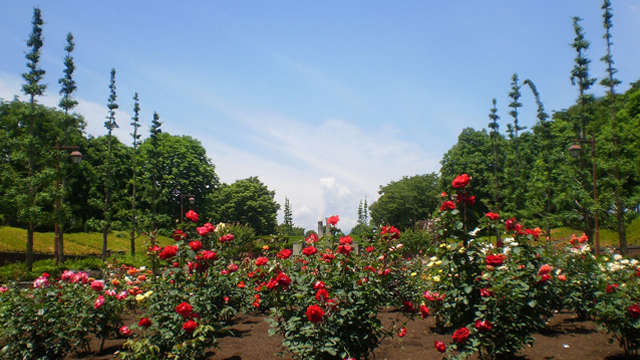
Akirudai Park
Akirudai Park

Akirudai Park is located in almost the very center of the Akiru Plateau, which itself is located between two tributaries of the Tama-gawa River: Aki-gawa River and Hirai-gawa River. The park is blessed with a rich natural environment, with Akigawa Hill and Takiyama Hill visible south of the Aki-gawa River, Hamura Flower Hill Nature Park visible north of the Hirai-gawa River, and the Okutama mountain range visible to the south. The park also contains an all-weather track course, and together with athletic facilities in the neighboring city of Akiruno it is a hub for sports activities in the Nishitama region.
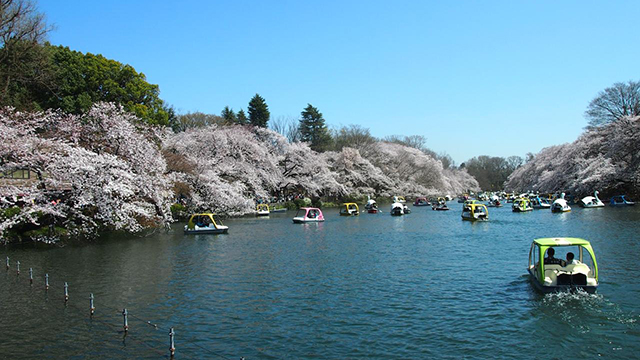
Inokashira Park
Inokashira Park

Inokashira Park was opened in 1917, as Japan's first suburban park. There is Inokashira pond in the park, and this area serves as a precious green space for the adjacent residential area.
The third Tokugawa shogun, Iemitsu, is said to have given Inokashira Pond its name. The name is said to mean either "source of the water supply" or "well that supplies the most delicious water". The Inokashira Pond was the source of the first water service for the city of Edo, the Kanda water supply. The water for this pond was used as drinking water until an improved water supply was completed in 1898. The landscape is rich in variety, with the lowlands around Inokashira Pond and the highlands of Gotenyama.
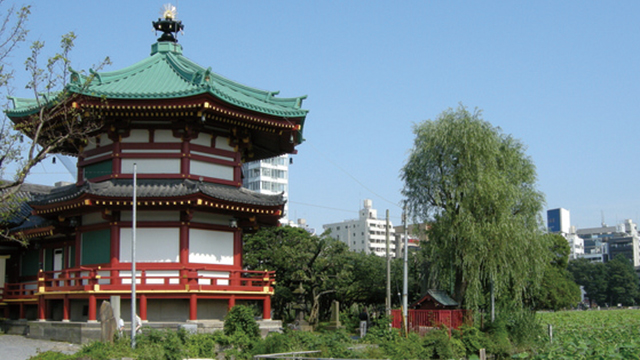
Ueno Park
Ueno Park

Ueno Park was designated as the first park in Japan in 1873. During the Edo period, this area was the grounds of Toeizan Kanei-ji Temple. After the Meiji Restoration, the land became government property. It was eventually given to Tokyo City in 1924 by the Imperial Household Ministry.
It is known for its cherry blossoms. There are about 800 cherry blossom trees in the park itself. Combined with a nearby zoo, Kanei-ji Kiyomizu Temple and Toshogu Shrine, there are about 1,200 cherry blossom trees in total. There are facilities, including zoo, museums and art galleries. Due to the cultural atmosphere, this park is loved by Tokyoites.
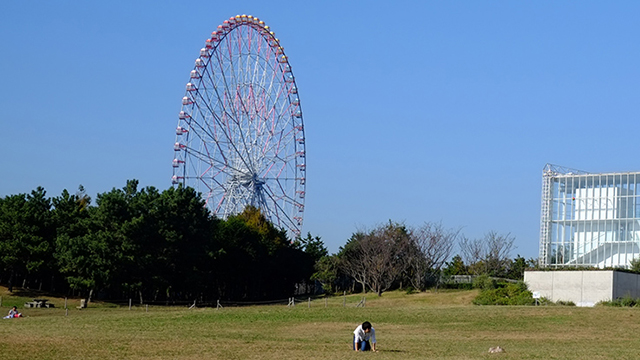
Kasai Rinkai Park
Kasai Rinkai Park

Kasai Rinkai Park, which is made up of five distinct zones, was formed under the themes of greenery, water, and people coming together at the great blue Tokyo Bay under the wide open sky. There are attractions such as the largest Ferris wheel called "Diamonds and flowers", "Barbecue Square" (reservation only), "Crystal View" observatory rest house, "Tokyo Sea Life Park", and "Bird Watching Center". You can enjoy gathering shellfish in the "Nishi Nagisa" artificial tidal flat adjacent to Kasai Rinkai Park.
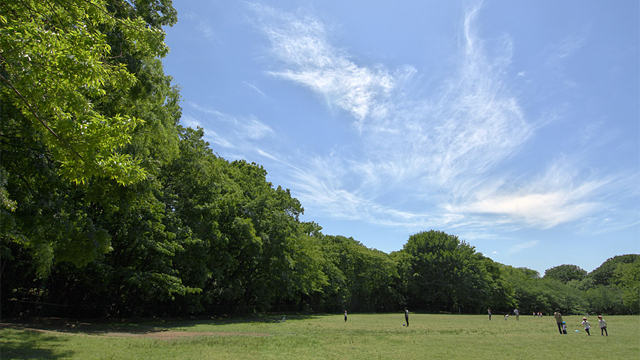
Kinuta Park
Kinuta Park

Kinuta Park is a Family park comprised of spacious lawns and forests in addition to containing exercise facilities, athletic field, and similar. When the weather is good on a weekend or holiday, the family park is bustling with running children and families eating picnic lunches. In addition, Setagaya Art Museum is located on the north side of the park.
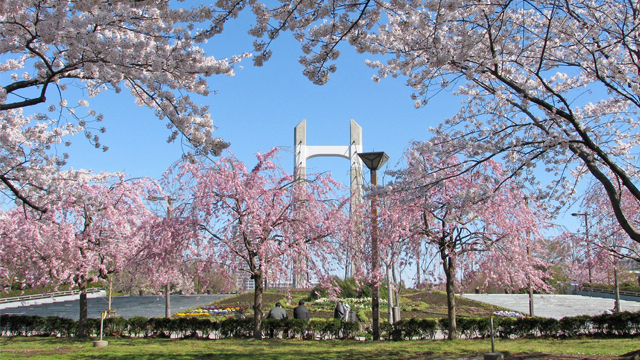
Kiba Park
Kiba Park

Kiba Park is divided by Kasaibashi Street and the Sendaibori-gawa River into three sections—south, central, and north. All of these sections are connected by the Kiba-Koen Ohashi Bridge, which serves to symbolize the park. The south section contains an expansive open space, a barbecue area, and Urban greening botanical garden, which is an exhibition garden for various plants. The north section contains an event plaza, a tennis court, and the Museum of Contemporary Art Tokyo.
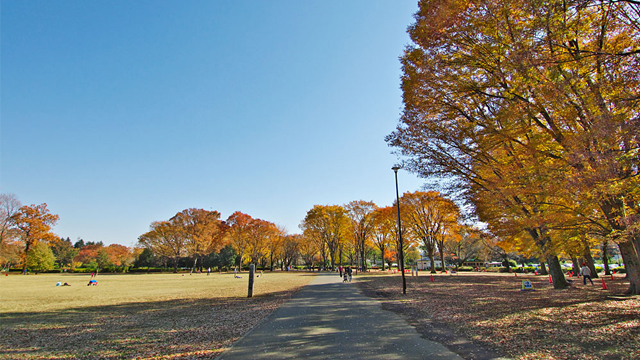
Koganei Park
Koganei Park

Koganei Park is a large 80-hectare park located along the Tamagawa Aqueduct. The park contains an expansive meadow surrounded by groves of mixed trees, a cherry tree garden, children’s field, SL(C57) steam locomotive display, Japanese archery range, tennis courts, and other facilities. The open meadow takes great advantage of the gently undulating slopes of the Musashino terrace and is beloved as a place of relaxation and enjoyment for picnics, children’s play, leisurely walks, jogging, and other activities.
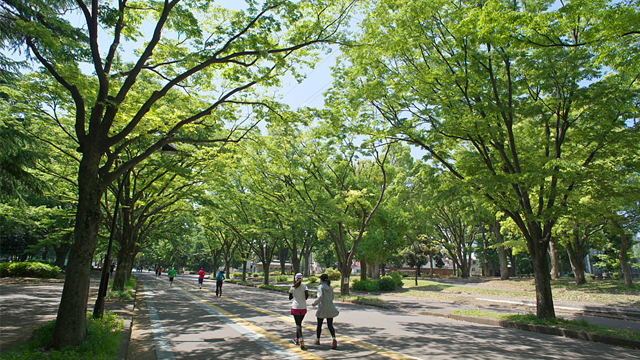
Komazawa Olympic Park
Komazawa Olympic Park

Komazawa Olympic Park was the second site at which the Tokyo Olympics were held and was host to wrestling, volleyball, and other competitions. Opened to the public as a park after the end of the games, it is beloved as a sports park that harmoniously combines greenery and numerous sports facilities. A jogging and cycling course runs the perimeter of the park and is popular throughout the year, allowing visitors to run under the shade of the trees and enjoy the seasonal weather.
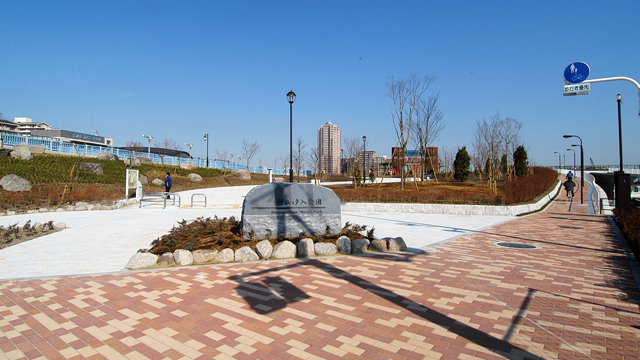
Shioiri Park
Shioiri Park

Shioiri Park is a city park located along Sumida-gawa River that was originally constructed as part of the Western Shirahige Urban Redevelopment Project. Doubling as an refuge site capable of holding 120,000 in an emergency, the park in normal times is a carefree multipurpose open space equipped with barbecue and picnic field, tennis courts, and mixed playground complexes. The east side of the park was built in an integrated manner with the super levee on the Sumida-gawa River, creating a comfortable urban environment with a waterside view.
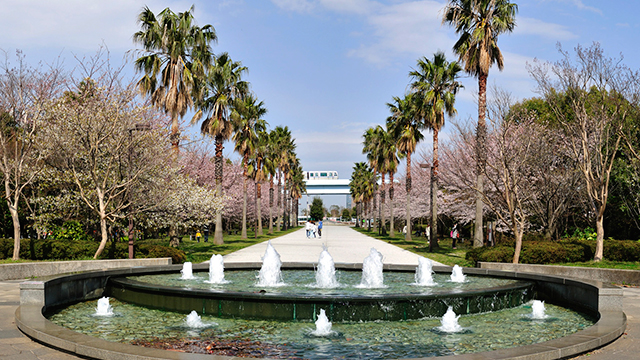
Shiokaze Park
Shiokaze Park

Shiokaze Park is the largest park in the Tokyo waterfront area. There are several noteworthy facilities, which include a barbecue area that you don't need to bring anything with you to use, and Shiokaze-maru ship, which is ship-shaped playground equipment. The park is adjacent to the Odaiba Seaside Park, which is a leading tourist spot in Japan.
You can also enjoy the beautiful scenery of Tokyo Bay with the Rainbow Bridge in the background. In particular, the evening and night views are strikingly beautiful and soothing.Shiokaze Park is the largest park in the Tokyo waterfront area. There are several noteworthy facilities, which include a barbecue area that you don't need to bring anything with you to use, and Shiokaze-maru ship, which is ship-shaped playground equipment. The park is adjacent to the Odaiba Seaside Park, which is a leading tourist spot in Japan.You can also enjoy the beautiful scenery of Tokyo Bay with the Rainbow Bridge in the background. In particular, the evening and night views are strikingly beautiful and soothing.
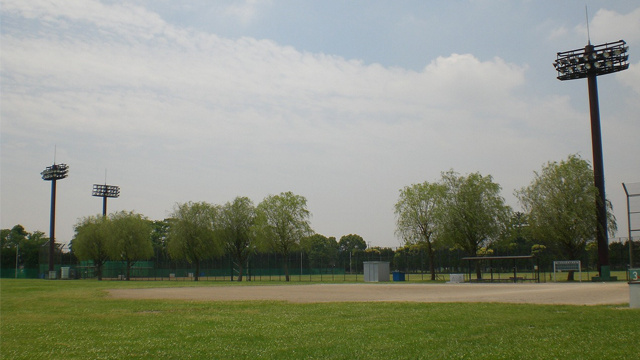
Shinozaki Park
Shinozaki Park

Located to the west of the embankment on the Edo-gawa River, Shinozaki Park is a valuable piece of green space in eastern Tokyo, an area lacking in greenery. Visitors can enjoy sports activities at the park’s baseball fields, multipurpose stadiums, tennis courts, and other athletic facilities in addition to the grassy meadows. The north side of the park contains barbecue picnic sites and is great for families.
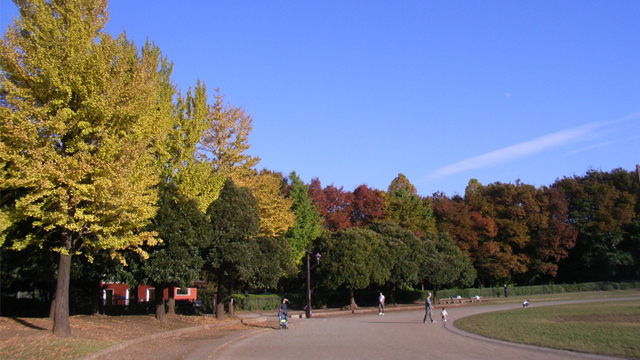
Johoku-Chuo Park
Johoku-Chuo Park

Located on the undulating terrain along the Shakujii-gawa River, Johoku-Chuo Park is the largest athletic park in the northern part of Metropolitan Tokyo (the 23 wards), equipped with baseball fields, stadiums, and other facilities. Here in the midst of the beautiful green trees, one can enjoy sports and leisurely strolls to one’s heart’s content. The park also contains Tokyo Metropolis-designated historical sites including the Paleolithic Muro ruins and the Kurihara ruins, a complex site with history tracing back from the Heian period to the Paleolithic period.
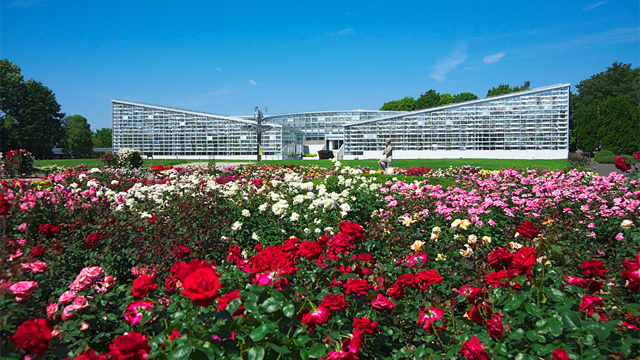
Jindai Botanical Gardens
Jindai Botanical Gardens

Reminiscent of the historical Musashino region, Jindai Botanical Gardens offers visitors a variety of beautiful plants and flowers to enjoy throughout the four seasons of the year. The gardens are divided into thirty blocks by plant type, including a rose garden, azalea garden, plum blossom garden, and Japanese clover garden, enabling visitors to learn about the plants while they enjoy the scenery. The gardens’ large greenhouse, which underwent renovation and reopened in May 2016, contains a collection of rare tropical plants with brilliantly colored flowers to enjoy.
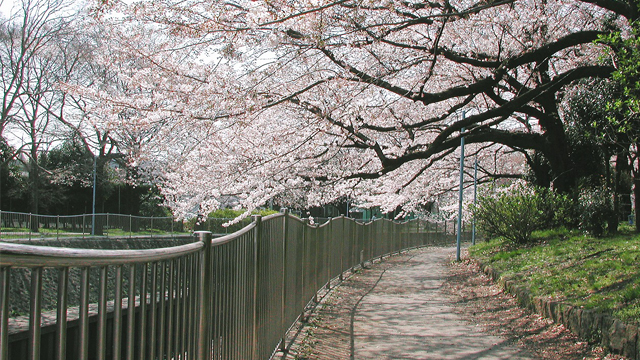
Zenpukuji-ryokuchi Park
Zenpukuji-ryokuchi Park

Zenpukuji-gawa River, with its source in Zenpukuji-ike Lake, snakes throughout Suginami City. Running along the riverside are Zenpukuji-ryokuchi Park and Wadabori Park. These two long belt-shaped parks total 4.2 km in length, connected by a promenade dotted with children’s play areas and tree groves reminiscent of the old historical Musashino region. From the cherry blossoms of spring to the leaves of autumn, these parks are ideal for enjoying the changes of the four seasons.
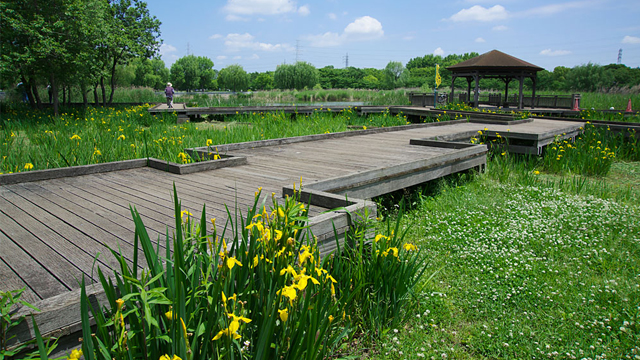
Toneri Park
Toneri Park

Though located in Tokyo, Toneri Park offers a wide-open sky and rich nature for visitors to enjoy. The west side of the park contains athletic facilities such as track grounds and tennis courts, while the northeast side contains a sled-racing slope and various open spaces around a pond and streams. These areas are beloved by the park’s many visitors. Other sites to see in the park include the “Reagan Cherry Tree,” returned to Japan as a symbol of U.S.-Japanese goodwill, and many other cherry trees planted through donation by Tokyo residents.
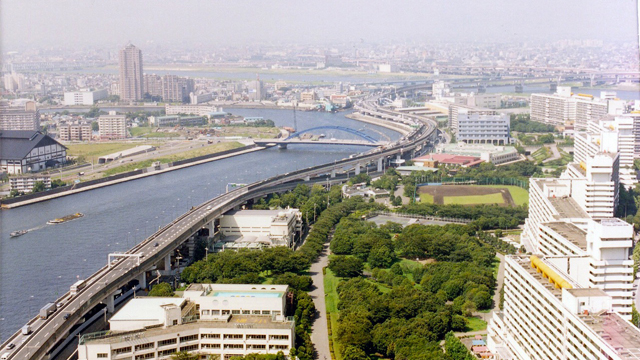
Higashi-Shirahige Park
Higashi-Shirahige Park

Higashi-Shirahige Park is a long, thin park full of greenery and recreation that runs north-south along the Sumida-gawa River at the northernmost portion of Sumida City. The entire area of the park is designated a “disaster prevention center” in the Basic Plan for Koto Redevelopment, and it can accommodate approximately 80,000 people in emergencies in its role as a refuge site. On the east side of the park is a 13-story Tokyo public housing complex that also serves as a “disaster prevention complex”.
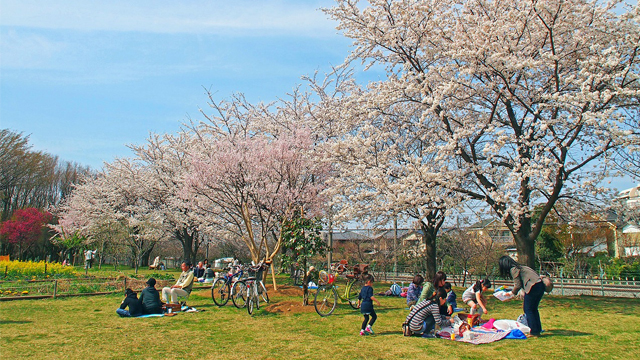
Higashimurayama-Chuo Park
Higashimurayama-Chuo Park

Still rich with the natural scenery of the historical Musashino, Higashimurayama-Chuo Park was created with the aim of conserving and restoring this greenery. Built around the forests at the east and west sides of the park are a bird sanctuary, streams, gateball fields, a shallow snail pond(splashing pond) , and other sites. The park is also located next to the Sayama-Sakairyokudo Road and serves as an oasis for cyclers.
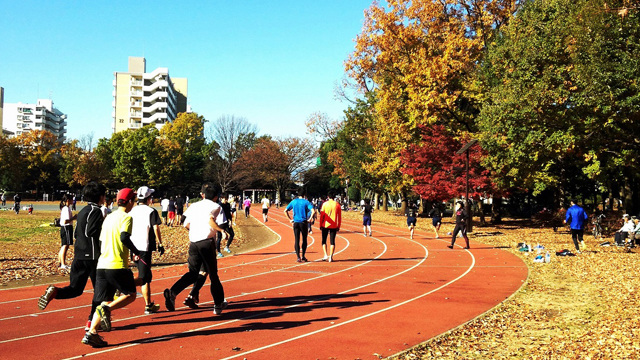
Higashiyamato-Minami Park
Higashiyamato-Minami Park

Higashiyamato-Minami Park is an athletic park partially built on the site of Yamato Base, an American military base. The park contains an old transformer substation for the defunct Hitachi Aircraft Company’s Tachikawa plant, and this substation is considered a valued cultural asset by Higashi Yamato City. Visitors can also enjoy the fresh greenery of 120 varieties of trees and shrubs as well as their flowers, fruit, and autumn leaves.
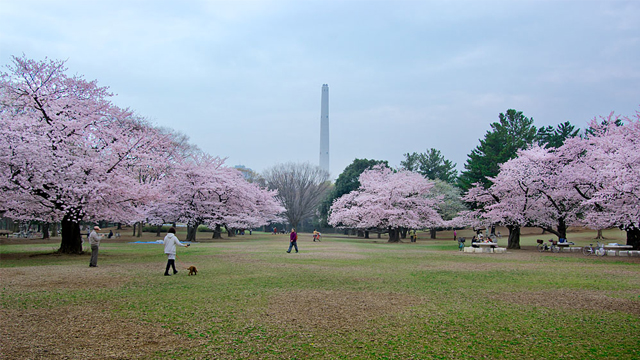
Hikarigaoka Park
Hikarigaoka Park

In the center of Hikarigaoka Park is an expansive 6-hectare lawn dotted with cherry blossoms and Japanese zelkova. The lawn forms a gentle hill, on which the trees providing adequate shade for napping or reading. The east side of the park is replete with sports facilities including baseball fields and archery grounds. With barbecue picnic sites and outdoor obstacle courses, the park is bustling with visitors on weekends and holidays.

Hibiya Park
Hibiya Park

This area was the location of the estate of Matsudaira Hizen-no-kami and others up until the fall of the shogunate, and was a military parade ground throughout the Meiji period. It was later planned, designed, and developed as an urban park, becoming Japan's first modern, western-style park. The park celebrated its 110th anniversary in 2013. The enthusiasm of the park designers, who were cultural pioneers, can be seen in the large and small outdoor music halls and public hall. The park's flower beds bloom with colorful seasonal flowers throughout the entire year, making the park a place of relaxation for people working in the nearby business district.
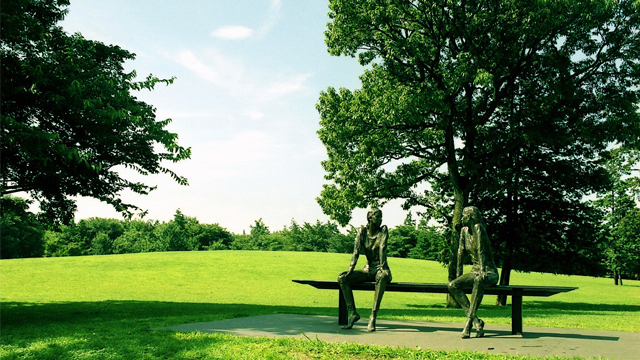
Fuchunomori Park
Fuchunomori Park

Enveloped in the greenery of Musashino, Fuchunomori Park was partially built on the site of Fuchu Military Base. Tennis courts, soccer fields, and other athletic facilities are nestled in compactly with green meadows and children’s playgrounds. Visitors can enjoy sports, family strolls, and other types of recreation here.
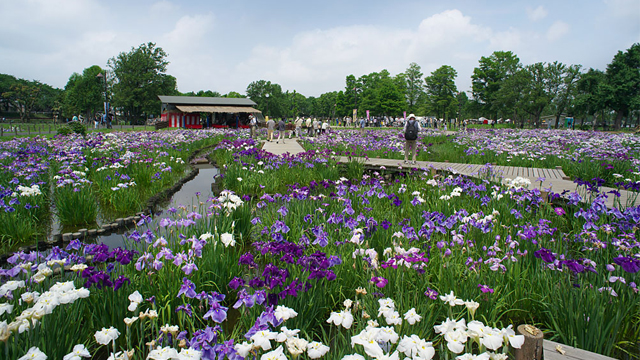
Mizumoto Park
Mizumoto Park

Built along the Koaidame flood control basin, Mizumoto Park is the only park in Tokyo with riverside scenery. This area was officially designated the Metropolitan Edogawa Suigo Park until 1975. The large and small canals extending out from Koaidame run throughout the park to create scenic riverside views. Rows of poplars, Metasequoia forest, Japanese alders, and other trees well-adapted to the waterside are grown in the park, and visitors can also see many aquatic plants including Japanese irises, water lilies, and cow lilies.
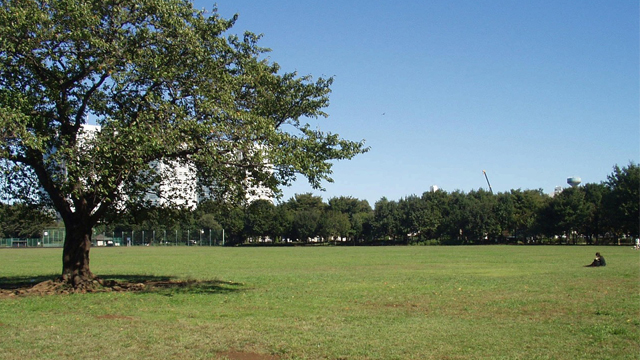
Musashino-Chuo Park
Musashino-Chuo Park

Musashino-Chuo Park is located in the eastern part of the Tama region. Before the war, the park was home to the Nakajima Aircraft Plant, a major munitions factory. The area was used as a housing lot for American troops for a time after the war until, upon the request of local residents, it was converted into a park. Based around a large Grassy field and Sports field, the park offers all manner of recreation amidst the refreshing air and the shining sun as visitors enjoy the feel of the four seasons changing around them.
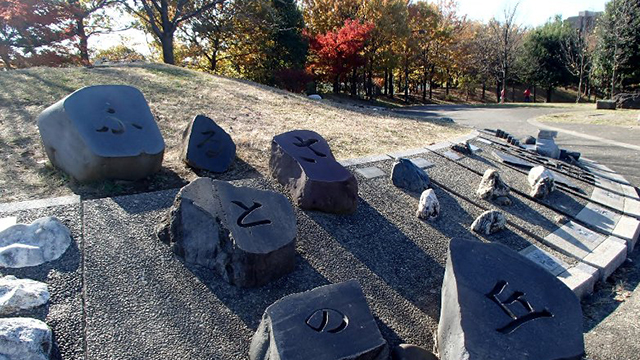
Musashino-no-mori Park
Musashino-no-mori Park

This is a park where you can enjoy the beautiful scenery surrounded by the lush forests of Musashino. From the "Furusato hill", where there are stones from each prefecture, you can look out onto Chofu Airport, you can also see skycrapers in Shinjuku on a clear and sunny day.
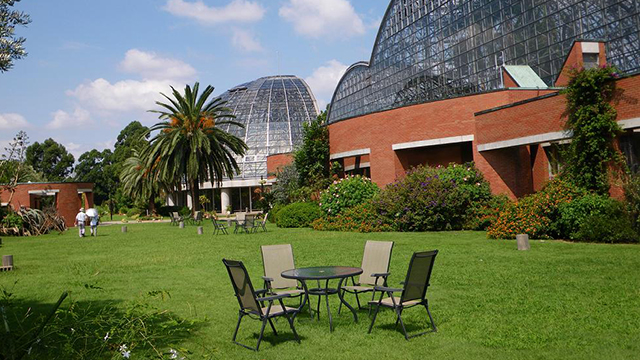
Yumenoshima Park
Yumenoshima Park

This 43-hectare comprehensive park was built on reclaimed lands and is surrounded by canals and waterways. The park looks like an urban dream island where lots of seasonal flowers can be seen throughout the year. There are several facilities, including a tropical greenhouse dome and a barbecue square which faces the marina.
There's also the "Daigo Fukuryu Maru Exhibit Hall", where a tuna fishing boat damaged by hydrogen bomb tests at Bikini Atoll is displayed.
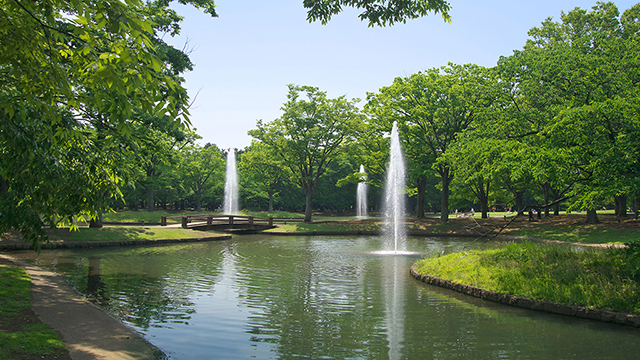
Yoyogi Park
Yoyogi Park

The site of Yoyogi Park was once a military parade ground. After the war, it was used as a US military dormitory ground, and then as the Olympic village for the 1964 Tokyo Olympics before being opened as a park. Yoyogi Park is the fifth largest urban park in the 23 wards of Tokyo. It is separated by a road into two sections: Section A, containing a forest park, and Section B, with a stadium, outdoor stage, and other facilities.
There are also other facilities, including cycling courses and a bird sanctuary.
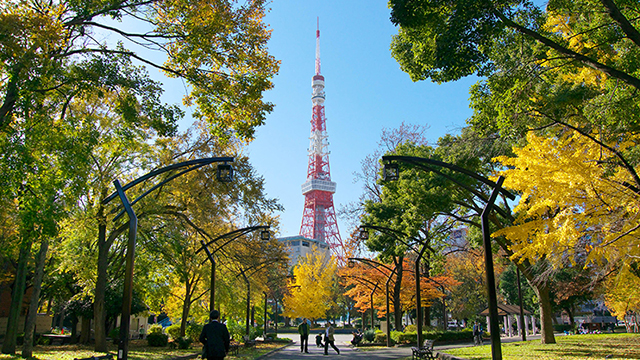
Shiba Park
Shiba Park

Shiba Park is one of Japan’s oldest parks. In 1873, a Daijo-kan proclamation deemed five locations in Ueno, Asakusa, Fukagawa, Asukayama, and Shiba to be Japan’s first parks, and these were the pioneers of subsequent park development. Shiba Park was initially a large park that contained the grounds of Zojo-ji Temple, but the temple grounds were removed from the park in order to separate church and state after the Second World War, creating the ring-shaped park of today.
As is befitting of an old park with a long history, there are large trees here and there such as Camphor trees, Japanese zelkova, and Ginkgo biloba.
Additionally, Shiba Park today contains a baseball field and tennis courts, but in 1902 it was equipped with exercise equipment and thereby became the first of Tokyo’s parks to have athletic facilities.
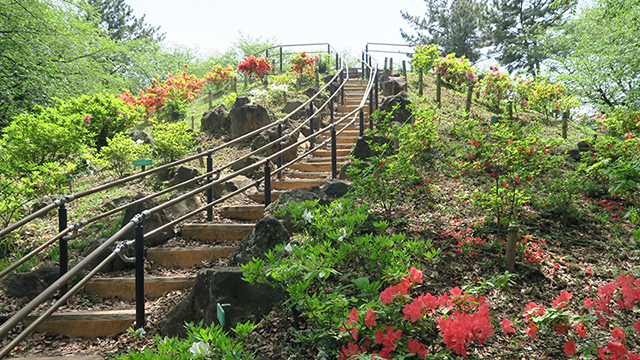
Toyama Park
Toyama Park

Toyama Park is divided into two sections. The Hakone section is centered around Mt. Hakone, the tallest mountain along the Yamanote Line, while the Okubo section is an open space on the other side of Meiji Street
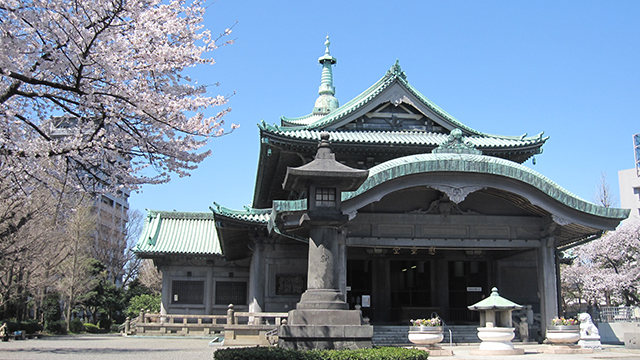
Yokoamicho Park
Yokoamicho Park

Yokoamicho Park contains the Tokyo Memorial Hall and the Great Kanto Earthquake Memorial Museum , both of which speak to the park’s history. In 1922, with the relocation of the army clothing depot, the city bought the grounds and developed them into a park. Just as that work was underway, the city was struck by the Great Kanto Earthquake on September 1, 1923. When the earthquake hit, people in the vicinity took refuge in the clothing depot, but the fires spread to the household furniture and belongings they had brought along, causing many deaths. The Earthquake Memorial Hall (today the Tokyo Memorial Hall) and the Great Kanto Earthquake Memorial Museum were built in the park to memorialize the victims and commemorate the major project to reconstruct and restore Tokyo. The crypt inside Tokyo Memorial Hall holds the remains of the earthquake's victims, and since the end of the Second World War it has also held the remains of ordinary citizens who were victims of the Great Tokyo Air Raid and similar attacks.
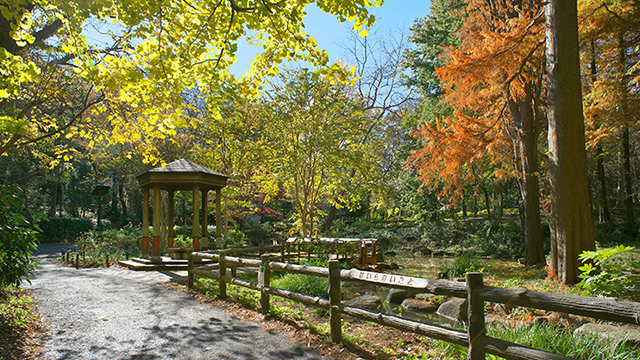
Rinshi-no-Mori Park
Rinshi-no-Mori Park

Rinshi-no-Mori Park was established as “Meguro Experimental Nursery” in June 1900 by the Ministry of Agriculture and Commerce’s Forestry Management Bureau. The nursery was then later renamed to the “Forestry Research Station,” fell under the jurisdiction of the Forestry Agency, and was heavily used through 1978.
With the establishment of Tsukuba Science City, the station was relocated and the site developed into what was temporarily opened to the public as “Meguro Park.” On June 1, 1989, the park was transformed into Rinshi-no-Mori Park and opened again. The park is long and thin, running 700 meters east-west and 250 meters north-south. One cycle around the path running the park’s outer perimeter can be completed in 45 minutes.
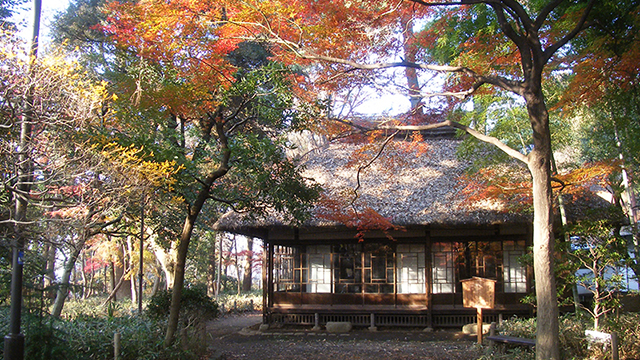
Roka Koshun-en Park
Roka Koshun-en Park

Roka Koshun-en Park was built on the site of the former home and garden, as well as the husband-wife gravesites and surrounding former residential property, of literary master Roka Tokutomi (penname of Kenjiro Tokutomi). Roka was a literary master of the Showa and Taisho periods famous for his works including Hototogisu (“The Cuckoo”), Shizen to jinsei (“Nature and Man”), and Mimizu no tawagoto (“Gibberish of an Earthworm”). Roka lived at the home with his wife Aiko for the latter half of his life. After his death, the city bought the land and established Roka Koshun-en Park.
Roka lived in a rented house in Tokyo’s Aoyama-Takagicho until February 1907. In order to live a life closer to Mother Earth, however, he sought a house and land in Kasuya in the village of Chitose, which at the time was still remote countryside. He called it “Koshun-en,” and for the approximately 20 years until his death on September 18, 1927, he lived a life of working outside in fine weather and reading at home in rainy weather.
On the 9th anniversary of Roka’s death in 1936, his wife Aiko donated their house, land, and the entire residential property to the city of Tokyo. In 1938, as per Aiko’s wishes, the city preserved the Musashino scenery and opened the property as a park. These buildings underwent repairs for deterioration in FY 1983-1985, and on March 10, 1986, the buildings were designated one of Tokyo’s official historical sites, the “former home of Roka Tokutomi.”
In the Koshun-en area, where Roka lived his bucolic life of working outside in fine weather and reading at home in rainy weather, visitors can see how he spent his active writing days and other aspects of his life long ago.
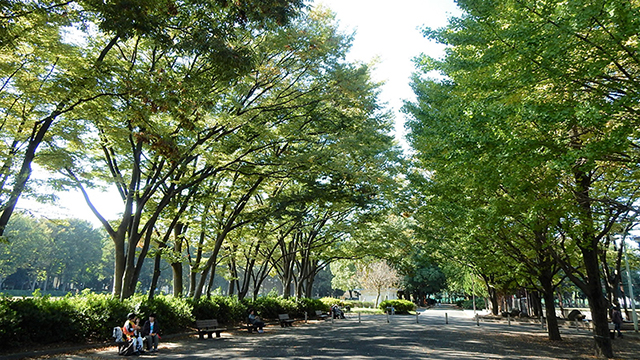
Akatsuka Park
Akatsuka Park

Akatsuka Park runs east-west along the Takashimadaira apartments and Metropolitan Expressway No. 5. The park is full of variety, containing virgin forests and the promenades running through them, open spaces, athletics facilities, and more.
This park was to be developed as “Akatsuka Ryokuchi Green Space” as per the 1943 city plan, but this was never realized due to the war. Later, Tokyo acquired the land through the 1972 land readjustment program and the park was opened in 1974.
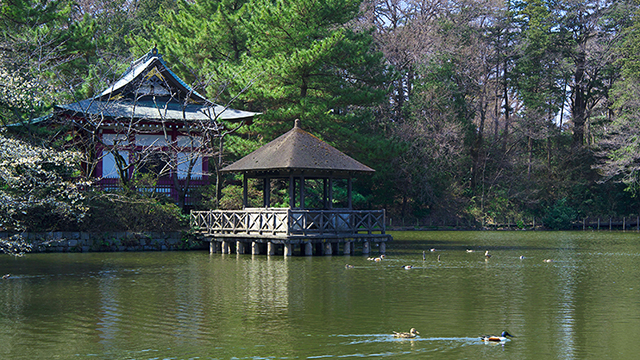
Shakujii Park
Shakujii Park

Shakujii Park is built around two ponds, Sanpo-ji Pond and Shakujii Pond. The interior of the park features undulating terrain with the natural features of Musashino remaining well-preserved. In addition to the tranquil Sanpo-ji Pond surrounded by trees and Shakujii Pond humming with boats, there is also the site of Shakujii Castle and several related ruins.
Additionally, the surrounding area that includes the park has been designated as a scenic zone to preserve its environment and scenery.
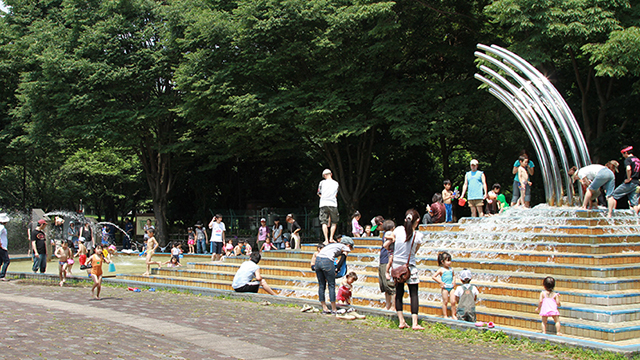
Oizumi Central Park
Oizumi Central Park

Located on the border between Tokyo and Saitama Prefecture, Oizumi Central Park was once part of the grounds of the former Imperial Japanese Army Academy. After the Second World War, the American armed forces seized the grounds and converted the area into Camp Drake, and the area that is now a park was used as a golf course.
After the grounds were returned, a planned area of approximately 10 ha was developed into a park that was opened to the public on June 1990.
The park includes the Mizu-no-Hiroba plaza, a fountain pond, a Musashino virgin forest, an open grassy lawn, playground equipment, and an expansive sand box. There are also track-and-field athletic grounds and a baseball field in the park. Oizumi Central Park is beloved as a safe and comfortable area for recreation by everyone from children to senior citizens.
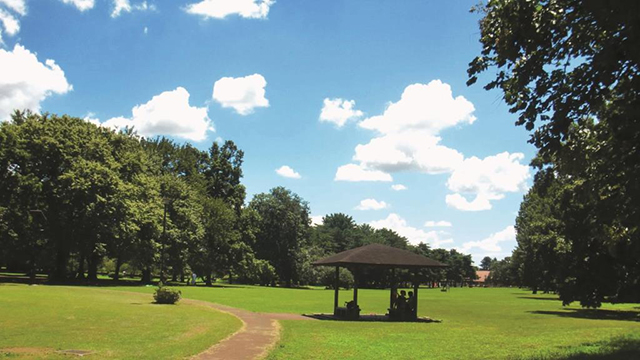
Nogawa Park
Nogawa Park

Nogawa Park is rich with rustic beauty and contains plentiful water and greenery. Before it was a park, this area served as a golf course for International Christian University. In 1974, the city purchased the golf course and, under the “Musashino Forest Initiative,” began to develop the surrounding green spaces including Jindai Botanical Gardens, Musashino Park, Tama Cemetery, Chofu Airport, Sengenyama Park, and Fuchunomori Park. Nogawa Park was opened to the public in June 1980.
Nogawa Park spans across the three cities of Chofu, Koganei, and Mitaka, split into three sections by the Nogawa River and Tokyo Route 246 (Tohachi Road). The north section of the park touches Kokubunji cliff line and includes Nogawa River with its rich natural environment; Nogawa River and Tokyo Route 246 mark both sides of an undulating grassy lawn; and the south section of the park contains another spacious grassy lawn as well as tennis courts, gateball courts, and a playground. Visitors can relax and freely immerse themselves in greenery at Nogawa Park.
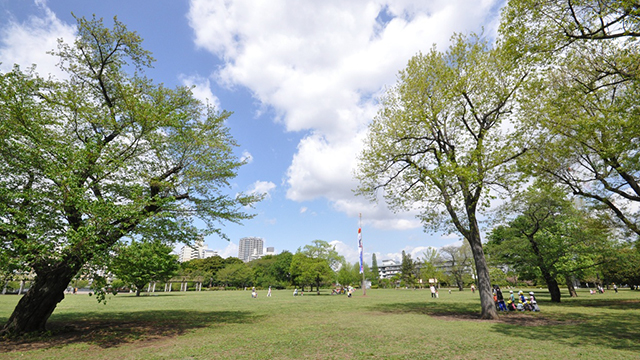
Musashi Kokubunji Park
Musashi Kokubunji Park

Built around a circular grassy lawn that is 500 meters in circumference, Musashi Kokubunji Park is a spacious and comfortable area with greenery and water, containing large trees such as cherry blossoms, Japanese zelkova, and ginkgo biloba from when it used to be the Chuo Railroad Academy, as well as a nicely placed balance of a waterfall, pond, and fountain. Running along the pond are wisteria and Chinese trumpet vine trellises running a total length of 33 meters with a 3-meter breadth. These flowers add color to the park during the flowering season.
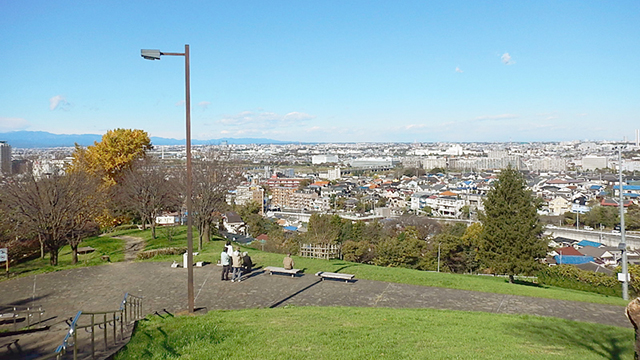
Sakuragaoka Park
Sakuragaoka Park

Located in Tama Kyuryo Prefectural Natural Park, Sakuragaoka Park consists of hills and valleys. As might be expected due to its hilly location, it lies on undulating terrain with dozens of meters separating its highest and lowest points. The park contains virgin forests of primarily mixed trees and is wonderful for nature walks. Additionally, the
Halfway through the park is Kyu-Tama Seiseki Memorial Hall (managed by Tama City).
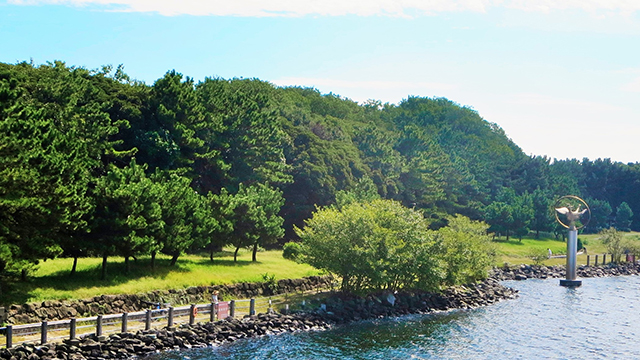
Oifutochuokaihin Park
Oifutochuokaihin Park

A park located along the Keihin-unga canal that offers a waterfront and rich greenery to enjoy. The park also contains a birdwatching hut and observation deck from which visitors can observe wild birds and go fishing. Nature observation meetings are held in spring and summer. To the east of the park is the East Bank Sports Grove, which contains athletic facilities such as a certified type-3 track and field stadium, tennis courts, and a baseball field, as well as the Sakura Viewing Square for flower-viewing parties, and a dog park in which dogs can play.
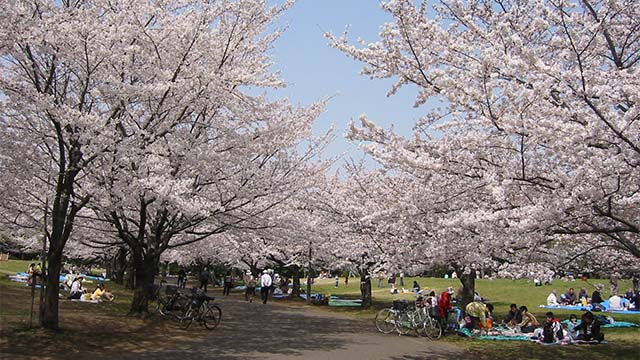
Oi Central Seaside Park Sports Forest
Oi Central Seaside Park Sports Forest

Oi central Seaside Park Sports forest is Tokyo’s leading scale sports park, with three certified athletic fields, and six baseball fields, artificial turf ground and tennis courts. You can also enjoy the sakura viewing square with a dog run where you can bring your pets to play and watch the flowers. You can also enjoy the waterside at Keihin Canal in Nagisa Forest, located on the west of the sports area, such as fishing.
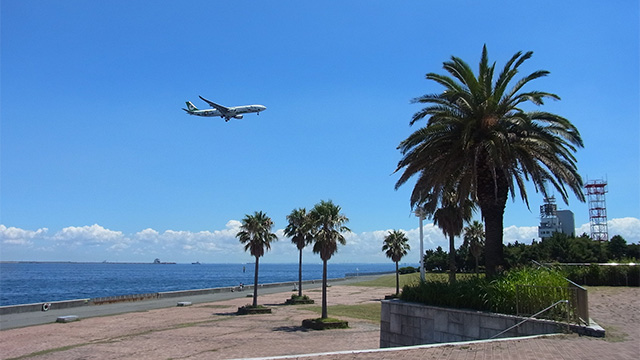
Jonanjima Seaside Park
Jonanjima Seaside Park

This seaside park is fun for everyone with a beach featuring a boardwalk, dog run, skateboard plaza, and more. There is a paid regular campground and caravan camping site (reservation required), so you can take a day trip to have a BBQ or camp out overnight. You can also get an up-close view of ships coming in and out of the port and planes taking off and landing at Haneda airport.
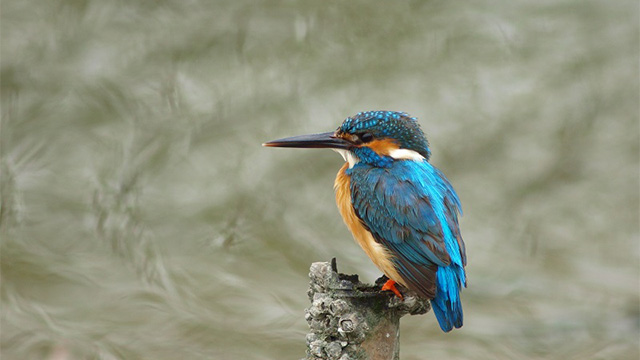
Tokyo Port Wild Bird Park
Tokyo Port Wild Bird Park

Tokyo Port Wild Bird Park is a lush natural habitat for precious wild birds in Tokyo. Here you can see around 120 different bird species throughout the year. About 230 species have been recorded in the park to date. There are observation huts scattered around the park for you to freely enjoy observing the wild birds. The Nature Center holds events throughout the year for learning about all facets of nature. You can also have guided tours of the park with park rangers and volunteer guides who give you information as you observe the birds, so the park is enjoyable even for novice birdwatchers.
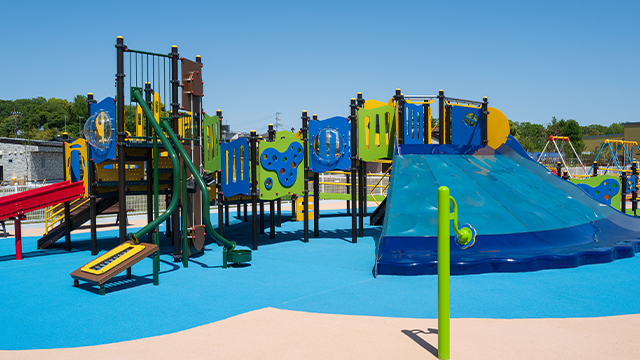
Nerima Castle Ruins Park
Nerima Castle Ruins Park

Nerima Joshi Park (aka Nerima Castle Ruins Park) was developed on the former site of Toshimaen, an amusement park long loved by Tokyo locals. The new park incorporates three concepts: water and greenery; a regional disaster prevention center; and bustling human activity. Despite having just opened on May 1st, 2023, it cherishes and respects the history, topography, and nature of its locality.
Going forward, we will continue to develop the park through the involvement of various entities and exchanges between people.
Gardens
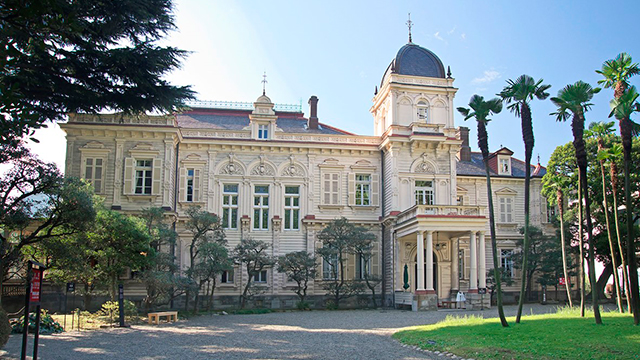
Kyu-Iwasaki-tei Gardens
Kyu-Iwasaki-tei Gardens

In 1896, the Kyu Iwasaki-tei Gardens were originally constructed as the principal residence of Hisaya Iwasaki, who was the eldest son of Yataro Iwasaki and became the third president of Mitsubishi.
The house was built while taking advantage of the various architectural styles of that time. Three buildings which include a Western style house, a billiards hall and a Japanese style house still remain. The Western styled house was designed by Josiah Conder, a British architect who worked on buildings such as Rokumeikan. The adjacent Japanese house is said to have been built by Kijuro Okawa, a master carpenter. There you can appreciate the elaborate Japanese-style construction techniques of that time, especially in the main hall. They have been designated as Important Cultural Properties by the Law fo Protection of Cultural Properties.
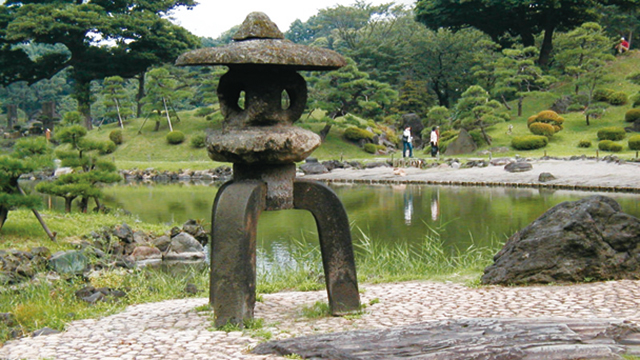
Kyu-Shiba-rikyu Gardens
Kyu-Shiba-rikyu Gardens

Kyu Shiba-rikyu Gardens once belonged to one of Tokyo's most famous feudal lords, and have remained in place since the early Edo period. It was a typical Japanese garden with a pond surrounded by a path, and the placement of the boundaries and rocks is superb. Many Nebuka stones were transported from Odawara, which was once part of the Okubo clan's land holdings, and used in some of the stone works and stepping stones found around the pond. Mt.Fuji's lava stones were used in the walls of the pond. They have been designated as national places of scenic beauty by the Law for Protection of Cultural Properties.
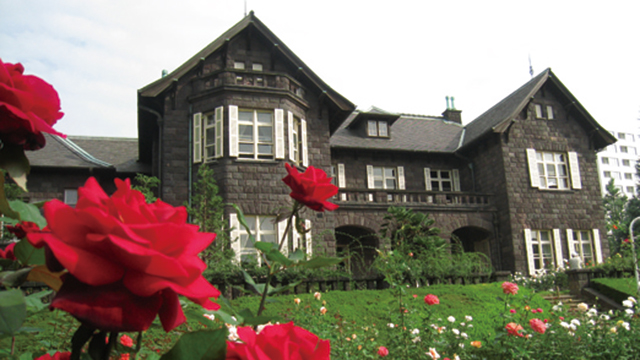
Kyu-Furukawa Gardens
Kyu-Furukawa Gardens

Kyu Furukawa Gardens are valuable in that they are made up of a Japanese garden and a Western-style garden which have harmoniously retained their original forms as they were in the early Taisho period.
The Western-style house and Western-style gardens were designed by Josiah Conder, a British architect who worked on projects such as Rokumeikan. 90 species of roses with 180 shares colorfully bloom in spring and autumn. The Japanese gardens were created by Jihei Ogawa. Centering around a Shinji-ike pond, a dry fall, a large fall and an island were arranged. They have been designated as special national places of scenic beauty by the Law for Protection of Cultural Properties.
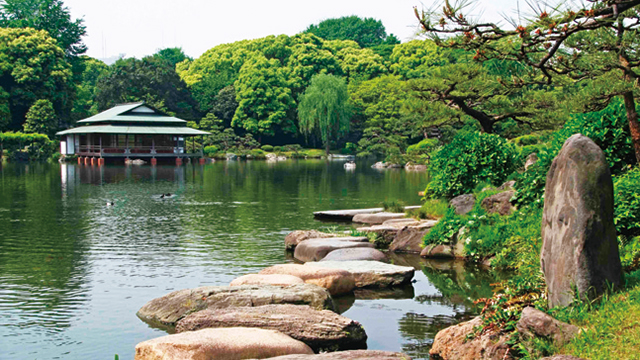
Kiyosumi Gardens
Kiyosumi Gardens

Yataro Iwasaki, a founder of Mitsubishi, purchased the ruined mansion of a feudal lord in 1878, and built a place with gardens for his employees to relax, and also to accommodate VIPs. There's a large pond and a small mountain called Mt. Fuji in the gardens, and beautiful stones that Iwasaki families purchased from all over Japan are arranged throughout. These gardens are one of the most famous gardens that were built in the Meiji period, and consist of a dry Japanese landscape garden with a pond surrounded by a path. In 1924, the garden as we currently know it was donated to Tokyo City by the Iwasaki family. In 1979, the garden was designated as a place of scenic beauty by Tokyo Metropolitan Government.
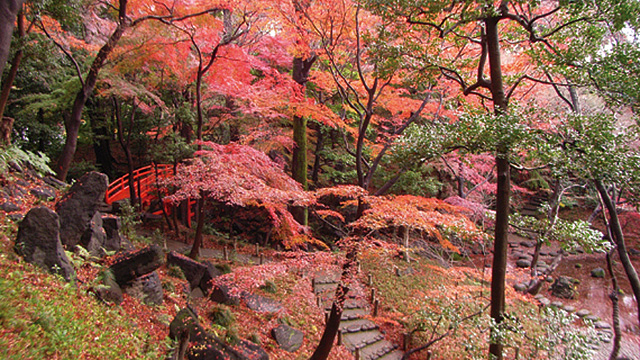
Koishikawa Korakuen Gardens
Koishikawa Korakuen Gardens

Koishikawa Korakuen Gardens were once the property of one of the most famous feudal lords in Japan, and they were built in the early Edo period. As a garden for one of his homes, construction on these gardens was started in 1629 by Yorifusa, the founder of the Mito Tokugawa family. They were completed during the lifetime of Mitsukuni, the second Mito Tokugawa feudal lord. Mitsukuni referred to the opinions of Ming China Confucian Shu Shunsui when constructing the gardens. Landscapes with Chinese names were arranged. The gardens that have a pond surrounded by a path are representative of a Chinese style atmosphere. Several beautiful landscapes, including a lake, mountains, rivers and the countryside were skilfully represented and reflected in these gardens. They have been designated as special national places of scenic beauty and historic sites by the Law for Cultural Properties.
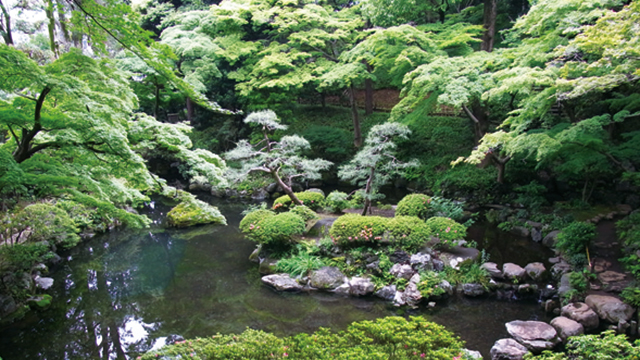
Tonogayato Gardens
Tonogayato Gardens

These gardens with paths around wooded areas and a pond were built by making artistic use of the natural landforms of the old Musashino region, which featured valleys made from stepped hills.
The bright lawns on the cliff contrast with the spring water pond under the cliff. Excellent landscaping techniques, including the arrangement of trees, enabled this contrast.
These gardens were developed at the site of a villa of Sadae Eguchi, who later became the Vice President of the Manchuria Railway in the early Taisho period. In 1929, the site became a villa of the Iwasaki family, the founder of Mitsubishi zaibatsu, and subsequently it was purchased by the Tokyo Metropolitan Government. They have been designated as national places of scenic beauty by the Law for Protection of Cultural Properties.
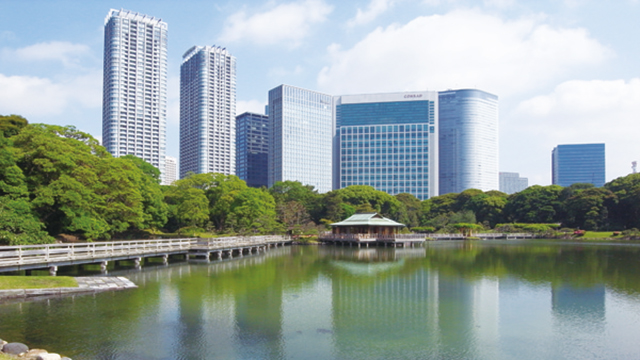
Hama-rikyu Gardens
Hama-rikyu Gardens

Hama-rikyu Gardens have a connection with the Tokugawa Shogunate, who ruled Japan during its Edo period. The gardens are characterized by a tidal pond and two duck hunting grounds. Originally, they were hawk hunting grounds, and then became a villa for the Shogun. After the Meiji Restoration, they became a detached palace for the Imperial household. They have been designated as special national places of scenic beauty and special historic sites by the Law for Protection of Cultural Properties. The tidal pond which imports seawater was built to enjoy the scenery that varies in accordance with the ebb and flow of the tide. This is the only Edo garden currently remain in the metropolitan area.
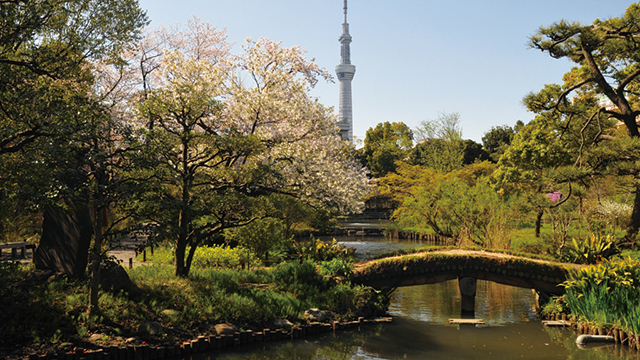
Mukojima-Hyakkaen Gardens
Mukojima-Hyakkaen Gardens

Mukojima-Hyakkaen Gardens were built in the Bunka-Bunsei period (the early 19th century), when Edo's urban culture was at its peak. With the help of his friends from his literary groups, Kikuu Sahara was able to develop and open a privately-operated flower garden in Mukojima, focused on ornamental flowers and plants. Hyakkaen means "a garden in which hundreds of flowers bloom throughout the year". There are also spring and autumn herbs, and people enjoy looking at the plants and flowers blooming in the fields. They have been designated as national places of scenic beauty and historic sites by the Law for Protection of Cultural Properties.
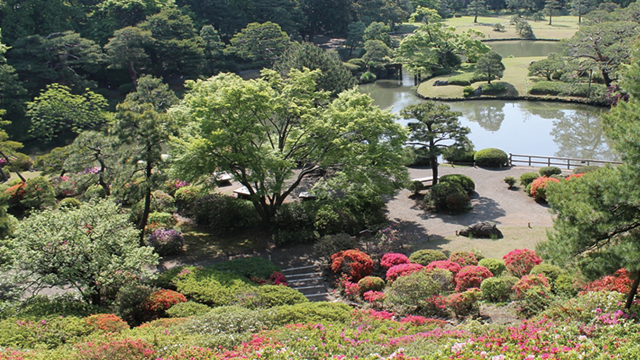
Rikugien Gardens
Rikugien Gardens

Rikugien Gardens were constructed by Yoshiyasu Yanagisawa, an advisor to the fifth Tokugawa Shogun, Tsunayoshi, in 1702. Yoshiyasu's ideas and deep knowledge on literature, including waka poetry, were expressed everywhere in these gardens. These gardens have a delicate and gentle atmosphere and are considered one of the best gardens that represent the Edo period. They have been designated as special national places of scenic beauty by the Law for Protection of Cultural Properties.
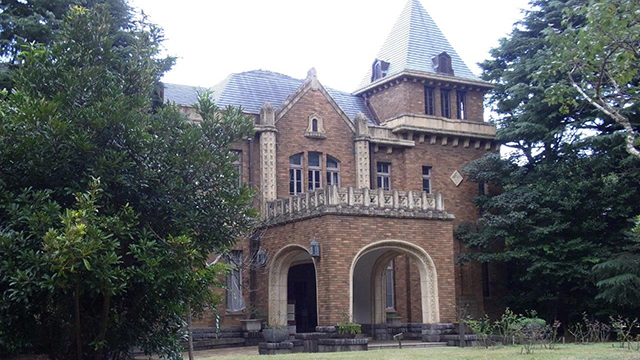
Former Residence of the Maeda Family
Former Residence of the Maeda Family

Located in the center of Komaba Park in Meguro Ward, it is registered nationally as an Important Cultural Property, along with the accompanying Japanese-style mansion. At the beginning of the Showa period, Toshinari Maeda, the 16th Marquis Maeda of the former lords of the Kaga domain, moved his estate to here from Hongo in eastern Tokyo. Marquis Maeda, who had experience stationed abroad, planned a residence that could house distinguished foreign guests. The Western-style mansion provided dignified and luxurious housing for both his own family as well as foreigners, while the Japanese-style mansion was said to be a traditional reception room to allow foreign guests to experience Japanese culture. Both mansions are balanced with respective Western and Eastern-style gardens.
Zoos
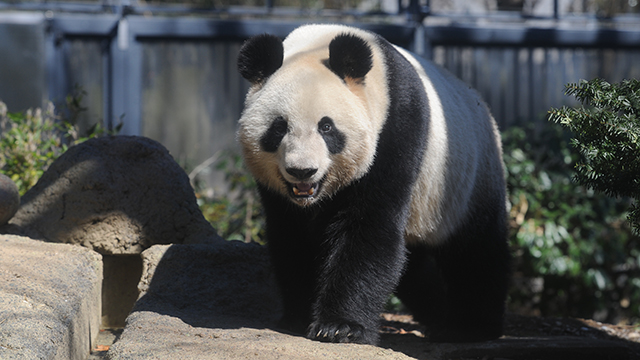
Ueno Zoological Gardens (Ueno Zoo)
Ueno Zoological Gardens (Ueno Zoo)

Ueno Zoological Gardens opened in 1882, as Japan's first zoo. The park is divided into an East Garden and a West Garden, and they are connected by a monorail. As a typical Japanese comprehensive zoo, it attempts to present real animals' lives and behaviors. You can see about 400 species of interesting animals that include the very popular giant pandas, gorillas and Asian elephants in the East Garden; shoebills, a type of bird that doesn't move, and marvelous kinds of monkeys, including aye-ayes, in the West Garden.
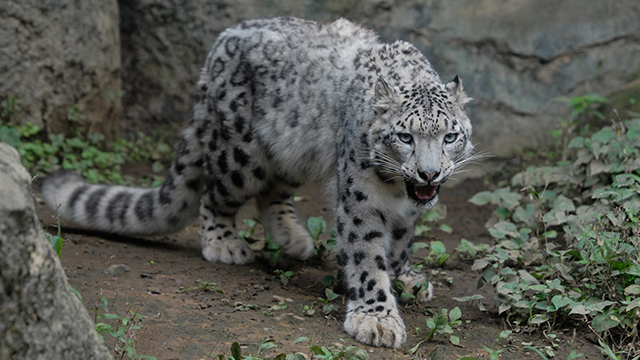
Tama Zoological Park (Tama Zoo)
Tama Zoological Park (Tama Zoo)

Tama Zoological Park is a zoo that skillfully makes use of vast hills and forests over a 50-hectare area. The park has an African Habitat which shows groups of giraffes, chimpanzees and lions, an Australian Habitat which shows unique animals such as koalas and kangaroos, and an Asian Habitat which shows orangutans living in places of high altitudes, rare snow leopards and golden takins. Relax and enjoy watching the animals in harmony with the nature distinctive in the four seasons.
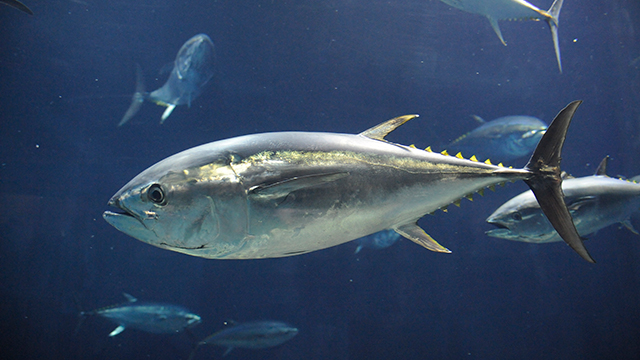
Tokyo Sea Life Park
Tokyo Sea Life Park

The large glass dome of Tokyo Sea Life Park will catch your eye as sits on the roof overlooking Tokyo Bay. In the Deep Sea Theater, a large water tank, you can see tunas, the voyagers of the sea, swimming together in a group. In the Sea of Tokyo area, there are creatures ranging from the Izu Islands to Tokyo Bay. In the Seas of the World area, there are creatures living in a variety of environments from all over the world, from the Arctic to the Antarctic sea, and from the deep seas as well. The penguin exhibition is one of Japan's largest and most superb exhibitions.
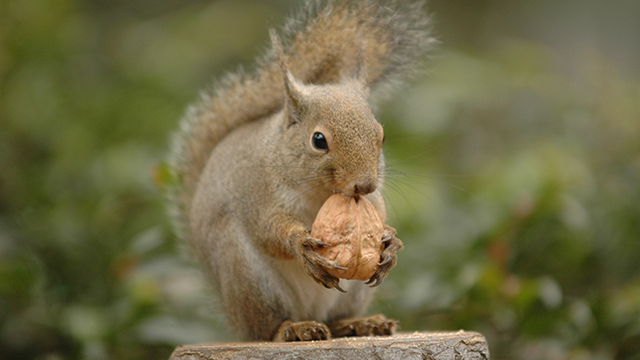
Inokashira Park Zoo (Inokashira Zoo)
Inokashira Park Zoo (Inokashira Zoo)

Located next to Inokashira Park, this zoo is full of lush greenery and features a variety of friendly animals that come primarily from Japan, such as the Japanese serow, the raccoon dog, and the Japanese badger. Popular sections of the zoo include the “Squirrel Trail” and the “Guinea Pig Petting Area”
Also in the park are an aquarium containing Aquatic Life and Sculpture Museum House displaying works by Seibo Kitamura, who is famous for creating the Peace Statue in Nagasaki Peace Park. Enjoy a slow stroll through the park and see the sights.
Natural Parks
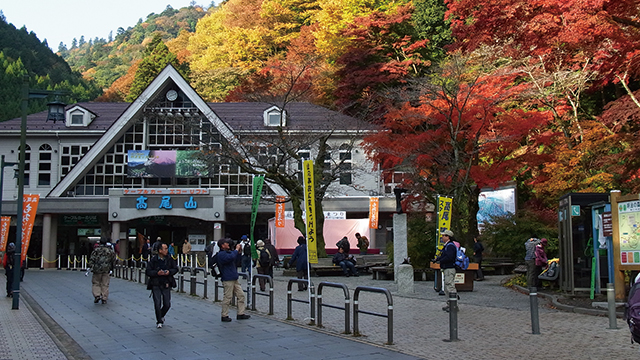
Takao Visitor Center
Takao Visitor Center

Mount Takao has an elevation of 599.15 meters. Yakuoin Yukiji Temple has served as a central place for worship for a long time. Currently, parts of the Tokyo Metropolitan Natural Park and Mt. Takao are designated as the Meiji no Mori Takao Quasi-National Park by the Ministry of the Environment. In addition to providing guidance and attraction information on the mountain trails, the Visitor Center also offers information, including the nature of, history of, and the relationship between humans and nature of Takao, through the use of exhibitions and commentaries.
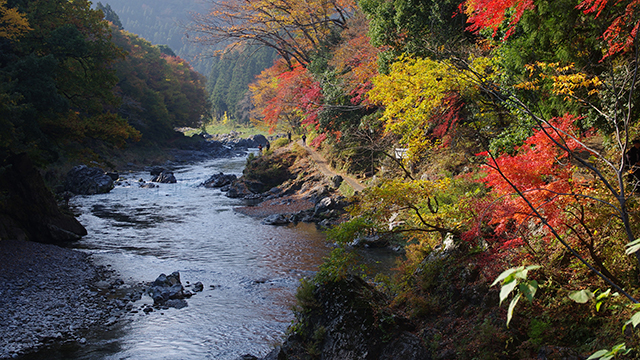
Mitake Visitor Center
Mitake Visitor Center

Mount Mitake has an elevation of 929 meters. It has been a place of worship for a long time. Musashi Mitake-jinja Shrine is enshrined in the vicinity of the summit, and surrounding the shrine are thatched-roof temple lodgings with long histories.
In addition to providing guidance and attraction information on the mountain trails, the Visitor Center also helps visitors to enjoy nature and culture through recreation with the addition of educational aspects.
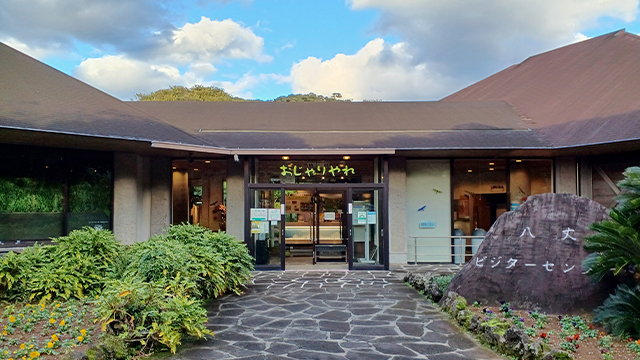
Hachijo Visitor Center
Hachijo Visitor Center

The Hachijo Visitor Center serves as the visitor entrance to the nature of Hachijojima. It is located within Fuji-Hakone-Izu National Park for the purpose of displaying and explaining information about the nature of Hachijojima in a way that is easy for visitors to understand.
At the visitor center, information about the nature of Hachijojima is presented in a variety of formats, such as photographic displays, voice-over guidance, a computer Q&A corner, and beautiful videos screened in our video presentation room. Please stop by to see us!
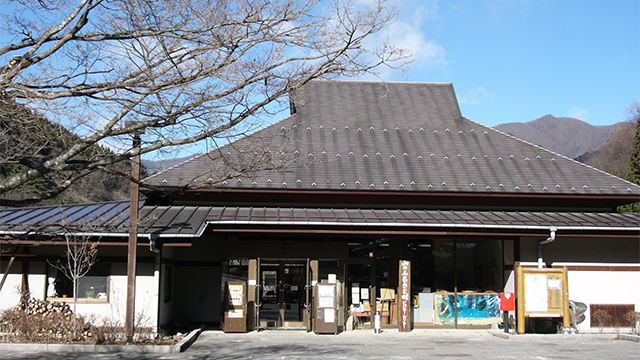
Tokyo Municipal Okutama Lakeside Park Yama no Furusato Mura
Tokyo Municipal Okutama Lakeside Park Yama no Furusato Mura

The Yama no Furusato Mura Visitor Center is located on the south bank of Lake Okutama, along Saiguchi Stream. The visitor center is staffed by Nature Interpreters (nature guides), who provide a variety of information and conduct nature experience programs (such as guided walks) every day. Inside the visitor center, a variety of exhibits introduce the nature, culture, and history of the surrounding area.
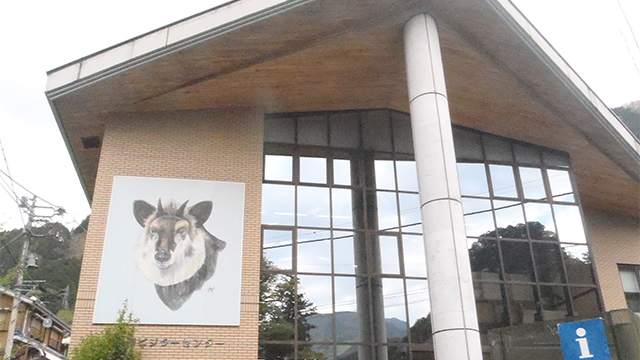
Okutama Visitor Center
Okutama Visitor Center

Why don't you come visit us when you're in the Okutama area?
Unlike the other visitor centers, the Okutama Visitor Center is not located at a scenic location, but is instead located in the city, close to a train station. When you visit the Okutama area for sightseeing or hiking, come to the visitor center first. We can help send you on your way with helpful information about sightseeing and nature!
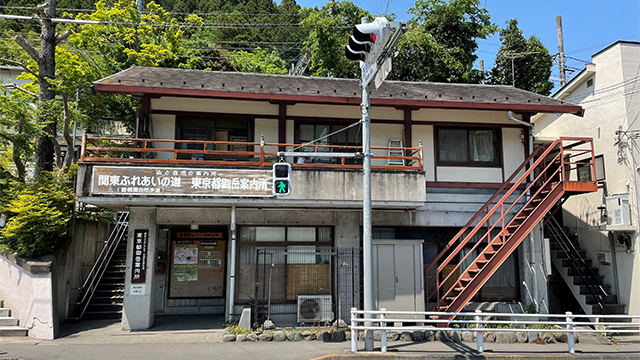
Mitake Information Center
Mitake Information Center

Mitake, which serves as the entrance to Chichibu-Tama-Kai National Park, is a popular destination for visitors. Visitors to our area enjoy not only hiking, but also visiting facilities such as our art museum, or taking walks along the Tama River.
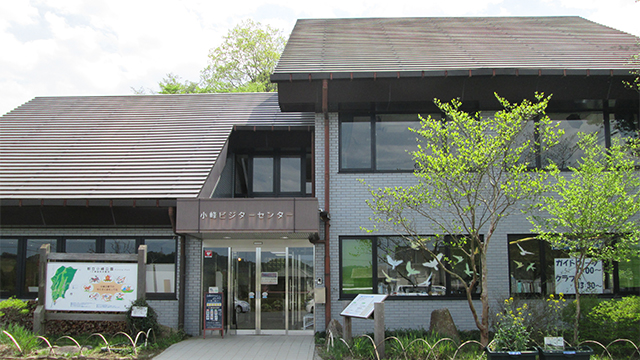
Komine Park
Komine Park

Metropolitan Akikawa Hills Natural Park features the most bountiful nature of any of the Tokyo prefectural natural parks. Komine Park is located approximately in the center of Akikawa Hills Natural Park. The visitor center, located inside the park, serves as a central facility that conducts a variety of activities designed to spread information about the surrounding nature and ways to enjoy the outdoors.
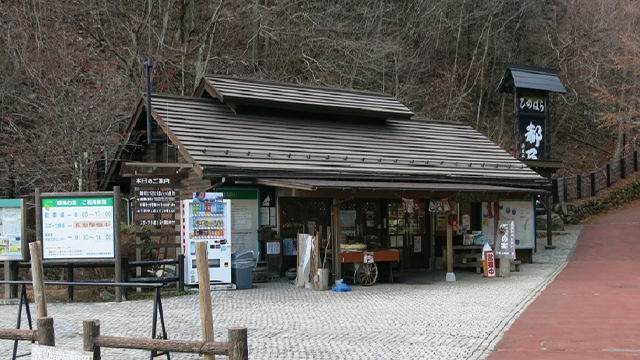
Hinohara Tokyo Citizens' Forest Tochinomi Store
Hinohara Tokyo Citizens' Forest Tochinomi Store

Situated 1,000 to 1,500 meters above sea level and half way up Mt. Mito, the highest of the three famous peaks of Okutama, on the western edge of Tokyo, Hinohara Tokyo Citizens’ Forest is a facility designed to help visitors connect with nature and deepen their understanding of forests. Many nature experiences and educational events are held here. The Tochinomi Store is located at the entrance to Hinohara Tokyo Citizens’ Forest, in the parking lot facing the Okutama Lake Circular Road.
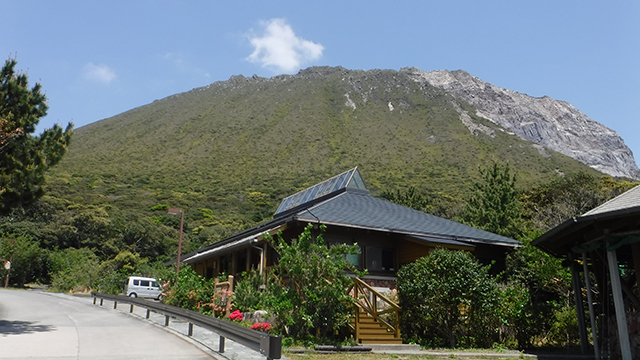
Takowan Park
Takowan Park

Takowan Park is located at the foot of Mt. Tenjo on Kozushima Island in the Fuji Hakone Izu National Park. The Kozushima climate is mild throughout the year, and is blessed with abundant nature. The park is located near Tako (a bathing beach), which has beautiful sandy beaches and magnificent scenery with the cliffs of Mt. Tenjo. They offer a campground for families to stay for long periods of time.
Museums・Halls
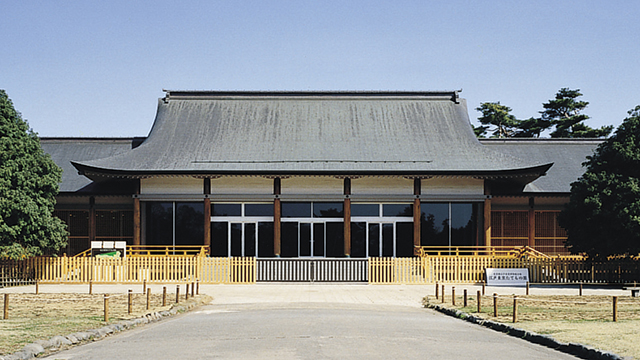
Edo-Tokyo Open Air Architectural Museum
Edo-Tokyo Open Air Architectural Museum

This open-air museum was opened on March 28th, 1993. The museum is located in Koganei Park and covers an area of about 7 hectares. 30 restored buildings from the Edo period to the early Showa period are lined up in the park. This museum contains historical buildings with great cultural value that were relocated, preserved, and displayed here because they could not be preserved in their original locations. The goal of this museum is to pass this important cultural heritage on to future generations.
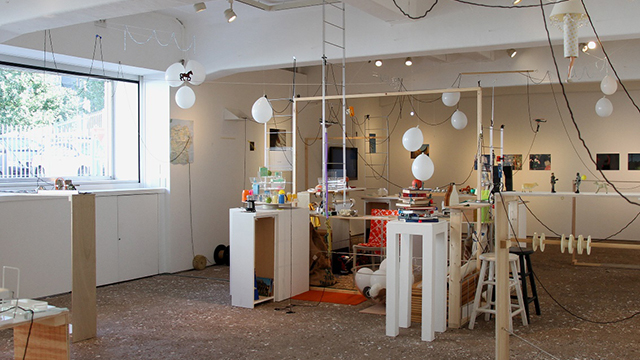
Tokyo Arts and Space Hongo
Tokyo Arts and Space Hongo

Tokyo Wonder Site Hongo is an art center that supports creating new art and culture and disseminating them from Tokyo. The center is involved in the discovery, training and support of young artists. Based in 3 museums, the center also supports artists from a variety of artistic backgrounds, and offers places for exhibitions, residency programs and education which are aimed for international cultural exchange. Since its opening in 2001, TWS Hongo has been a base for diverse activities focusing on the support and training programs of young artists.
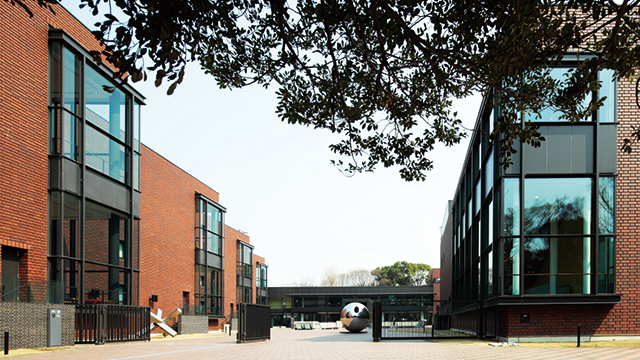
Tokyo Metropolitan Art Museum
Tokyo Metropolitan Art Museum

Tokyo Metropolitan Art Museum opened in 1926 in Ueno Park as the first Tokyo Prefectural Art Museum.
In addition to presenting nearly 300 exhibitions each year, the museum holds special exhibitions where visitors can enjoy renowned works from Japan and abroad. It also hosts various art communication programs and explores new possibilities, serving as a place for cultural exchange. The museum hopes to become a "cornerstone in which visitors can enhance their cultural awareness and wisdom" and in which the art "enpowers visitors" as a place that can serve as an entrance to the arts and where everyone can visit casually.
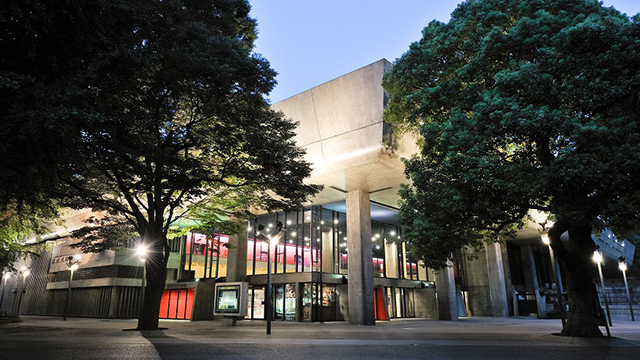
Tokyo Bunka Kaikan (Tokyo Metropolitan Festival Hall)
Tokyo Bunka Kaikan (Tokyo Metropolitan Festival Hall)

Tokyo Bunka Kaikan(Tokyo Metropolitan Festival Hall) was built as part of the project to celebrate the 500th anniversary of the birth of Tokyo, in which the hall would fulfill the need for a "full-fledged music hall, in which opera and ballet can be performed in the capital Tokyo". It was opened in April 1961. The building is also famous for its typical modernist architecture designed by Kunio Maekawa. The hall consists of a main hall for opera, ballet and orchestra performances, and a recital hall, which is used for indoor music, recitals, etc.
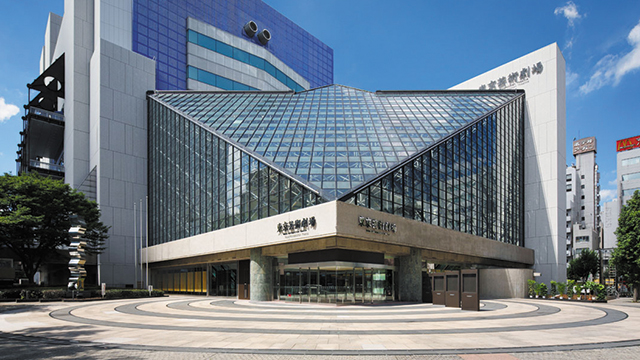
Tokyo Metropolitan Theatre
Tokyo Metropolitan Theatre

Tokyo Metropolitan Theatre was opened in October 1990 as a facility for citizens to promote art and culture, including music, theater, opera, and dance, and also to facilitate the international exchange of these types of performances.
Right in front of your eyes is the artistic Ikebukuro Nishiguchi Park, with its vast areas of greenery and many sculptures.
One of the world's largest pipe organs can be seen in all of its magnificence.
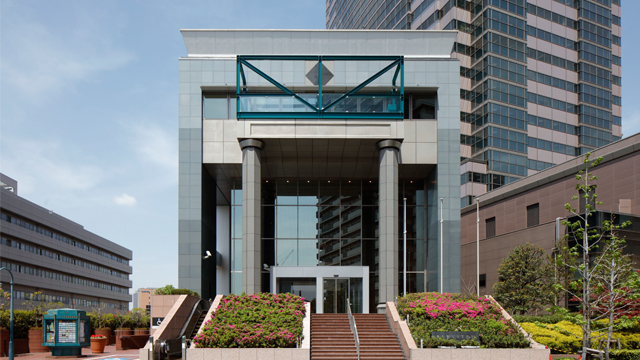
Tokyo Photographic Art Museum
Tokyo Photographic Art Museum

The Tokyo Photographic Art Museum (TOP Museum) was founded in Ebisu in 1995 as Japan’s first comprehensive museum devoted to photography and moving images. The museum's three exhibition halls, reopened in September 2016 after large-scale renovations, host over twenty exhibitions a year, including everything from individual exhibitions focused on famous Japanese and foreign artists to the Yebisu International Festival for Art & Alternative Visions, an art and film festival. Films of the highest quality are screened in the hall on the first floor. Visitors are free to enjoy the museum's photography and moving images in a variety of ways, with facilities including art production workshops, a free-to-use specialized library, a café, and a museum shop.
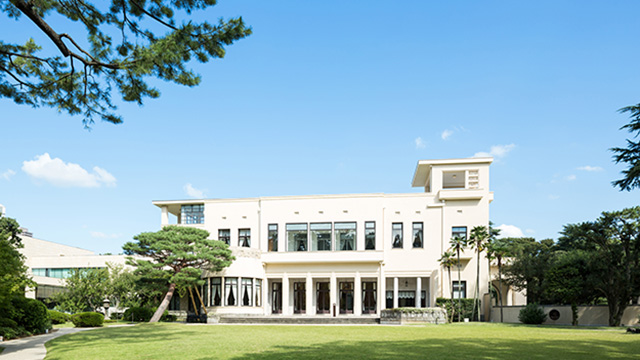
Tokyo Metropolitan Teien Art Museum
Tokyo Metropolitan Teien Art Museum

With its exhibitions that make use of the Art Deco-style Asakanomiya House building built in 1933 and its surrounding space, this unique art museum in harmony with its lush green garden has been beloved by many since its opening in 1983. A new facility with a White Cube gallery was completed in 2014, adding a new creative space to over 80 years of history and tradition.
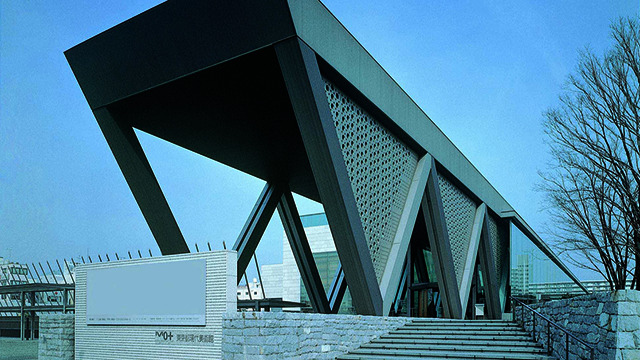
The Museum of Contemporary Art Tokyo
The Museum of Contemporary Art Tokyo

The Museum of Contemporary Art Tokyo opened in March 1995 with the aim of promoting contemporary art and enriching the foundation of art culture. Utilizing about 5,200 pieces of work, it holds a wide range of exhibitions related to contemporary art such as collection exhibitions and large-scale international exhibitions. In addition, it has an art library with approximately 100,000 art-related books and provides information on art.
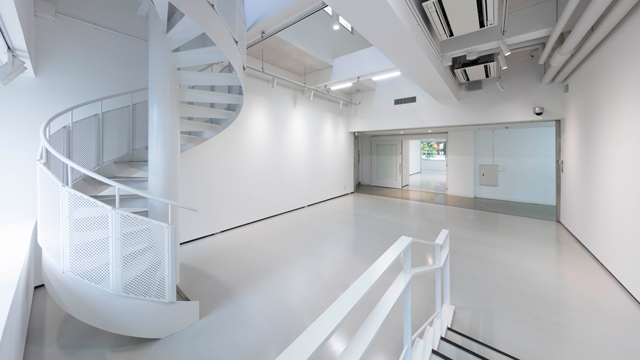
Tokyo Shibuya Koen-dori Gallery
Tokyo Shibuya Koen-dori Gallery

An important hub for the promotion of outsider art (art brut) in Tokyo, the Tokyo Shibuya Koen-dori Gallery hosts a variety of works and exhibits on outsider art and other fields, as well as interactive and creative interchange programs. Its aim is to use art to promote understanding of diversity and contribute to the achievement of a tolerant, inclusive society.
Ports・Airports
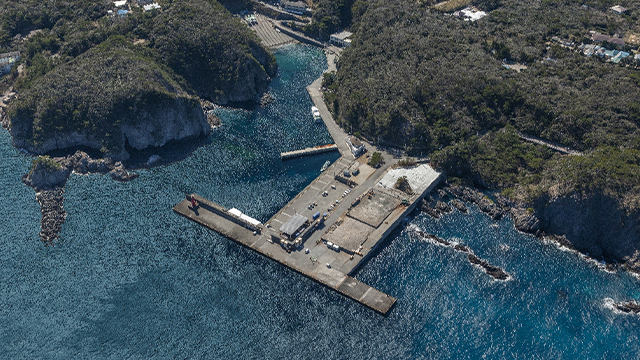
Nobushi Port
Nobushi Port

Shikinejima Island is an island with a population of about 600. You can enjoy the natural hot springs while looking at the sea, allowing you to view the transparent blue sea water and its seabed, and the white sand beach that stretches as far as the eye can see. You can also enjoy activities, including fishing, cycling and camping. You can spend the day relaxing in comfort on this idyllic and somewhat nostalgic island.
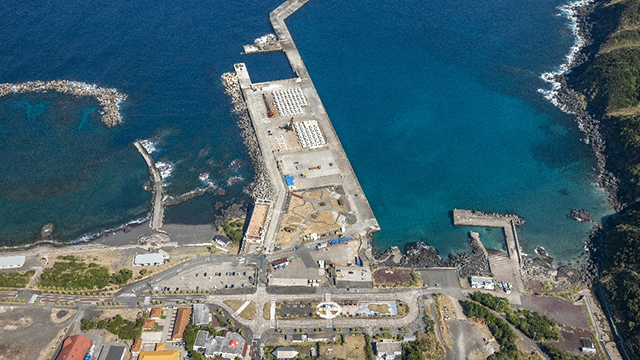
Kaminato Port
Kaminato Port

Hachijojima is a southern Izu Island. It is located 287 kilometers from Tokyo.
It is a natural paradise where various plants thrive year around, and is visited by a wide variety of birds.
It offers a number of ways to enjoy yourself, including hot springs, gourmet food, diving, fishing, trekking, and power spots.
Palm trees line the streets and bright red hibiscus flowers bloom from May to October, enhancing the tropical atmosphere of the island.
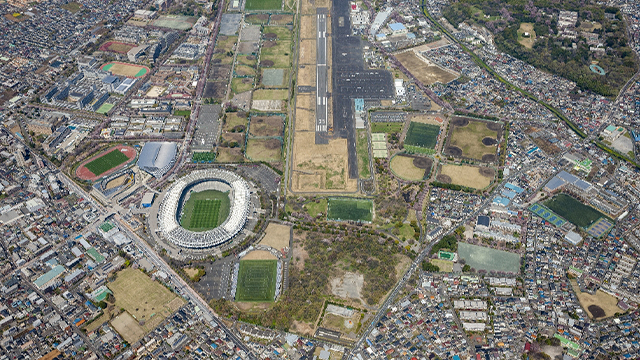
Chofu Airport
Chofu Airport

Chofu Airport is run by Tokyo Metropolitan Government. The airport connects the mainland with Oshima, Niijima, Kozushima and Miyakejima islands, by air.
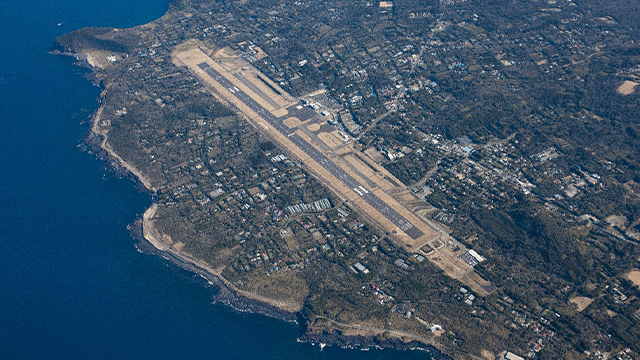
Oshima Airpot
Oshima Airpot

Izu Oshima Island is located in the Pacific ocean,120km from Tokyo, and is the largest island in the Izu Islands. If you climb up Mt. Mihara (altitude 758m), which is called Gojinka and cherished by the islanders, you can see a superb view from the vicinity of the crater which is 300 meters in diameter and more than 200 meters deep. On the island, there are facilities, including onsens, a municipal ranch, a government-run park, a local museum, and a volcano museum. You can enjoy activities, including marine sports, fishing, cycling, and also local entertainment such as camellia flower dyeing.
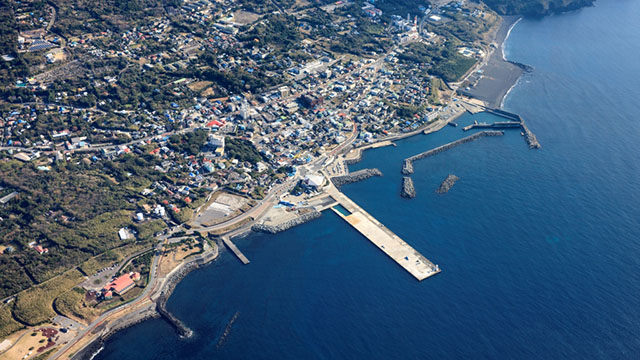
Motomachi Port Passenger Waiting Place
Motomachi Port Passenger Waiting Place

Izu Oshima is the largest island in the Izu Archipelago, and is located in the Pacific Ocean 120km from Tokyo. Climbing Mt. Mihara (758m above sea level), popularly known to the islanders as Gojinka-sama (god of fire), offers a spectacular view from near the volcanic crater, which is 300m in diameter and more than 200m deep. The island is also home to hot springs, a town run ranch, a metropolitan park, a local museum, and a volcano museum. Visitors are also welcome to enjoy marine sports, fishing, cycling, and local arts such as camellia dyeing.
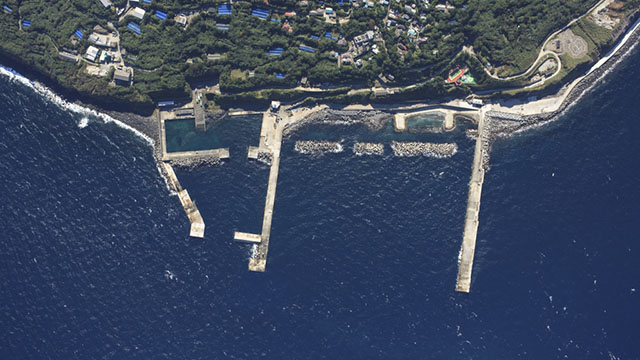
Toshima Port Passenger Waiting Place
Toshima Port Passenger Waiting Place

Toshima Village is an island located 2 hours and 45 minutes by high speed boat from Takeshiba Port in Tokyo. Their main industry is camellia oil, and they have the highest production volume in Japan. The Ise-Ebi (Japanese spiny lobster) and large sazae are also marine products representative of Toshima island. In recent years, dolphins have started living around the island, and the “dolphin swim,” where you can swim alongside them has become popular. When the sun goes down, the skies of Toshima island turn into a natural planetarium.
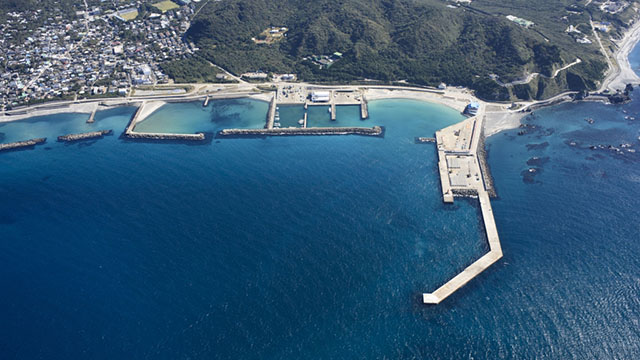
Niijima Port Passenger Waiting Place
Niijima Port Passenger Waiting Place

Located about 160km from Tokyo, the island has a unique elongated shape; about 3km from the east to west, and about 11.5km from the north to the south. It is a mecca for surfing, and busy with swimmers during the Summer, but activities such as hot spring and camping can also be enjoyed during the outdoor seasons of Spring and Autumn. We also recommend visiting historic sites and cycling during these seasons. It is said to be the place of origin of “kusaya.”
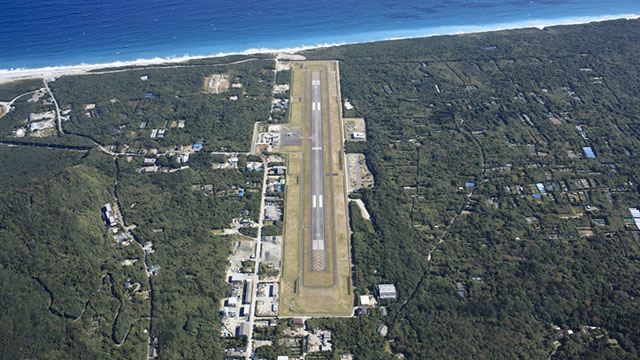
Niijima Airport Terminal
Niijima Airport Terminal

Located about 160km from Tokyo, the island has a unique elongated shape; about 3km from the east to west, and about 11.5km from the north to the south. It is a mecca for surfing, and busy with swimmers during the Summer, but hot springs and camping can be enjoyed during the outdoor seasons of Spring and Autumn. We also recommend visiting historic sites and cycling during these seasons. It is said to be the place of origin of “kusaya.”
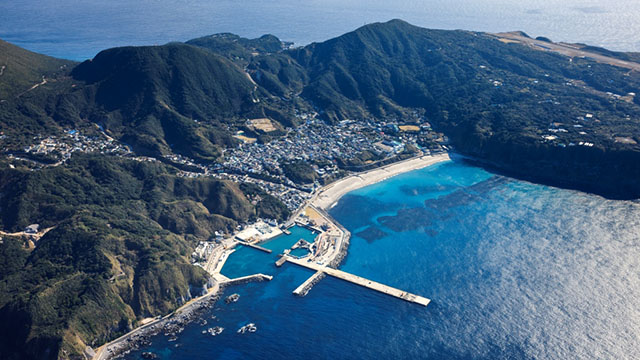
Kozushima Port Passenger Waiting Place
Kozushima Port Passenger Waiting Place

Located about 3 and a half hours from JR Hamamatsu-Cho Station by jetboat, Kozushima island is an island at the westernmost point of the Izu Islands. It is an island popular for its beautiful deserts and ponds at the mystical summits of Mount Tenjo, and marine activities in the sparkling, deep green ocean. In the village, you will be able to see the traditional Japanese way of life and observe people as they work.
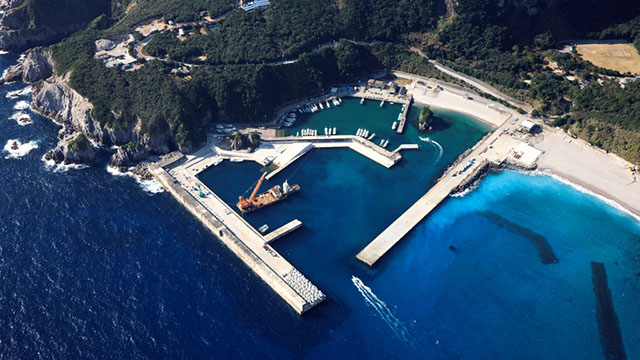
Miura Port Passenger Waiting Place
Miura Port Passenger Waiting Place

Located about 3 and a half hours from JR Hamamatsu-Cho Station by jetboat, Kozushima island is an island at the westernmost point of the Izu Islands. It is an island popular for its beautiful deserts and ponds at the mystical summits of Mount Tenjo, and marine activities in the sparkling, deep green ocean. In the village, you will be able to see the traditional Japanese way of life and observe people as they work.
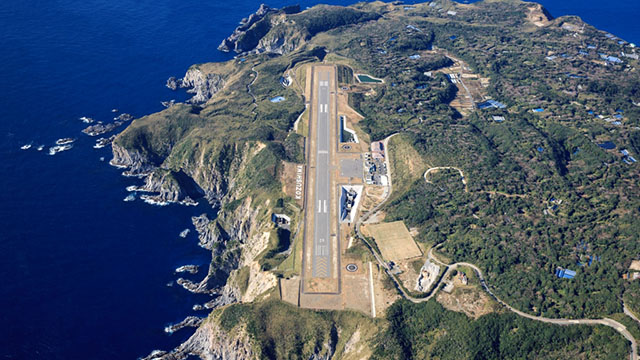
Kozushima Airport Terminal
Kozushima Airport Terminal

Located about 3 and a half hours from JR Hamamatsu-Cho Station by jetboat, Kozushima island is an island at the westernmost point of the Izu Islands. It is an island popular for its beautiful deserts and ponds at the mystical summits of Mount Tenjo, and marine activities in the sparkling, deep green ocean. In the village, you will be able to see the traditional Japanese way of life and observe people as they work.
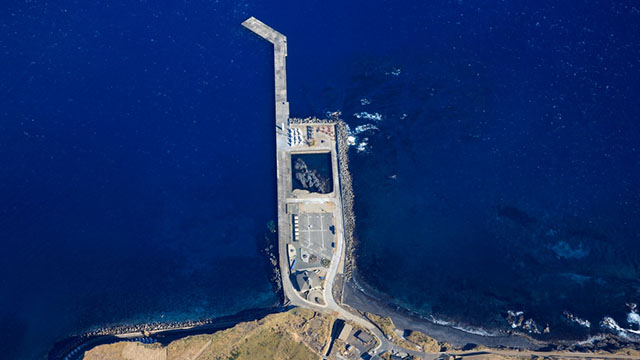
Miike Port Passenger Waiting Place
Miike Port Passenger Waiting Place

Miyakejima island is located about 180km south of Tokyo. The island has an annual average temperature of 17.7℃, only about 12 summer days per year that exceed 30℃, and barely any days when the lowest temperature falls below 0℃. It is a livable island with a mild climate throughout the year.
In the 2000 eruption, Haccho-bira, the old crater that was at the Mt. Oyama summit collapsed, and a new caldera about 450m deep was created.
The majestic volcanic island scenery that can be seen from all over the island makes it feel like a natural volcanic museum. Please come and visit Miyakejima island where you can feel the gentle touch of Earth.
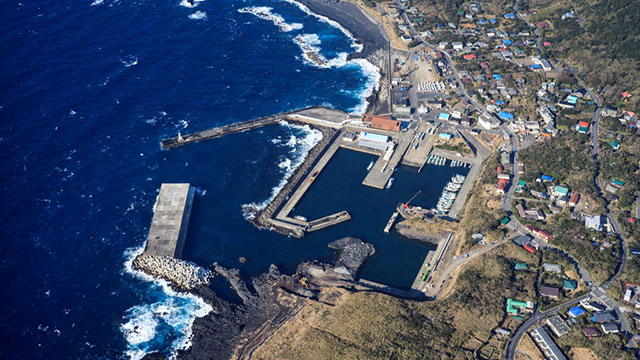
Ako Port Passenger Waiting Place
Ako Port Passenger Waiting Place

Miyakejima island is located about 180km south of Tokyo. The island has an annual average temperature of 17.7℃, only about 12 summer days per year that exceed 30℃, and barely any days when the lowest temperature falls below 0℃. It is a livable island with a mild climate throughout the year.
In the 2000 eruption, Haccho-bira, the old crater that was at the Mt. Oyama summit collapsed, and a new caldera about 450m deep was created.
The majestic volcanic island scenery that can be seen from all over the island makes it feel like a natural volcanic museum. Please come and visit Miyakejima island where you can feel the gentle touch of Earth.
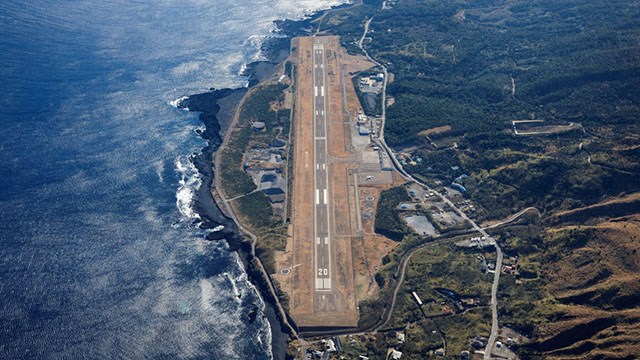
Miyakejima Airport Terminal
Miyakejima Airport Terminal

Miyakejima island is located about 180km south of Tokyo. The island has an annual average temperature of 17.7℃, only about 12 summer days per year that exceed 30℃, and barely any days when the lowest temperature falls below 0℃. It is a livable island with a mild climate throughout the year.
In the 2000 eruption, Haccho-bira, the old crater that was at the Mt. Oyama summit collapsed, and a new caldera about 450m deep was created.
The majestic volcanic island scenery that can be seen from all over the island makes it feel like a natural volcanic museum. Please come and visit Miyakejima island where you can feel the gentle touch of Earth.
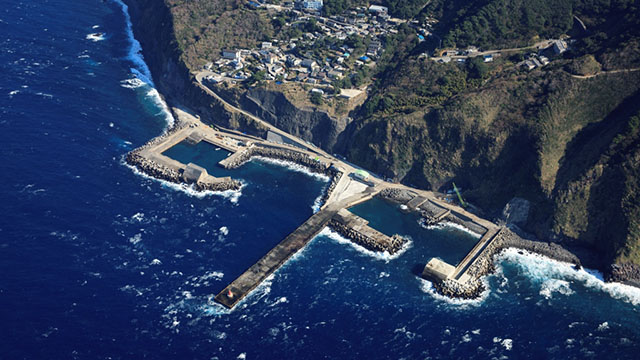
Mikurashima Port Passenger Waiting Area
Mikurashima Port Passenger Waiting Area

A place where you can make your wish of swimming with dolphins come true. If you can’t swim or are a bit scared but still want to swim with dolphins, you can view them while using a float, or of course, from a boat or the shore.
To protect the natural environment of Mikurashima island that houses dolphins and other valuable animals and plants, Tokyo has started allowing ecotourism on the island. As day trips and camping are not allowed at Mikurashima island, it is necessary to make reservations before entering the island. This small island has a lot of charm tightly packed into it.
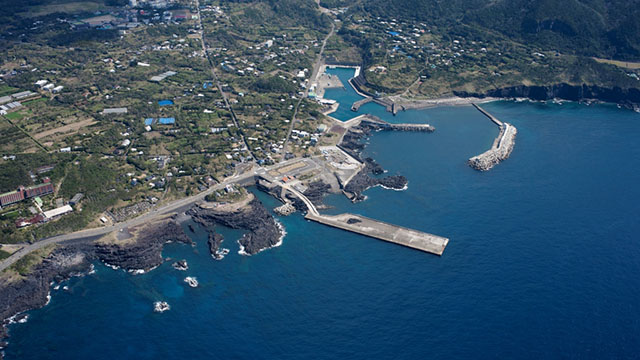
Yaene Port Passenger Waiting Area
Yaene Port Passenger Waiting Area

Hachijojima island is situated 287km from Tokyo and is considered the tropical island of the Izu Islands. It is a natural paradise where a diverse range of plants grow throughout the year, also visited by many wild birds. The island has a lot to offer, including hot springs, gourmet food, diving, fishing, trekking, and spiritual locations. The roadside palmtrees and bright red hibiscus flowers that bloom from May to October heighten the tropical island atmosphere.
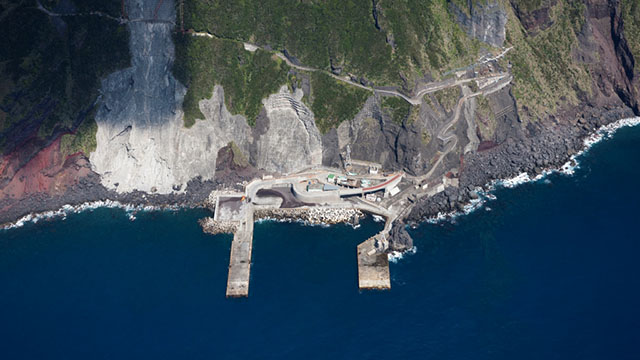
Aogashima Port Passenger Waiting Area
Aogashima Port Passenger Waiting Area

Located 358km south of Tokyo, it is a remote island far off in the sea with a coastline of 9km. With one of the few double volcanoes in the world, flowers blooming every season, and fumaroles that are called “Hingya” in the island dialect, you can witness the great forces of nature here.
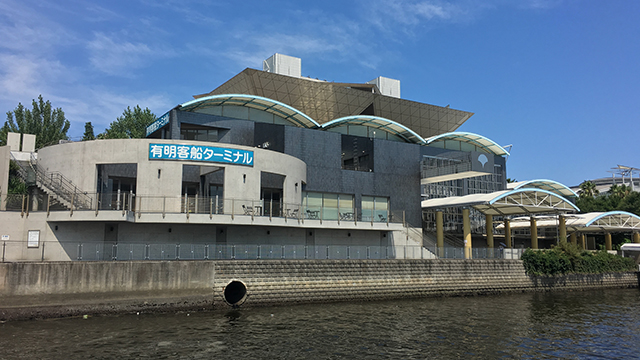
Ariake Passenger Ship Terminal
Ariake Passenger Ship Terminal

Ariake Passenger Ship Terminal was opened in April 1996 as a base for a transport system connecting Hinode Pier with the Tokyo Water Front City via sea bus.
Located next to Tokyo Big Sight, the terminal handles transport between the Ariake area and downtown Tokyo.
The terminal helps support access to Tokyo Big Sight during exhibitions and conferences.
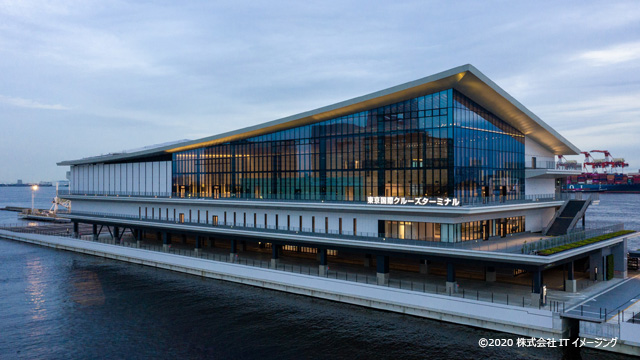
Tokyo International Cruise Terminal
Tokyo International Cruise Terminal

"Tokyo International Cruise Terminal," which can accommodate the world's largest cruise ships, opened in September 2020 as a new gateway to the capital in order to welcome more guests from around the world.
It has great access from the airport and main railway stations and offers a sweeping view of Tokyo Bay from the observation deck. By all means, please stop by if you ever find yourself in the new Tokyo waterfront center.
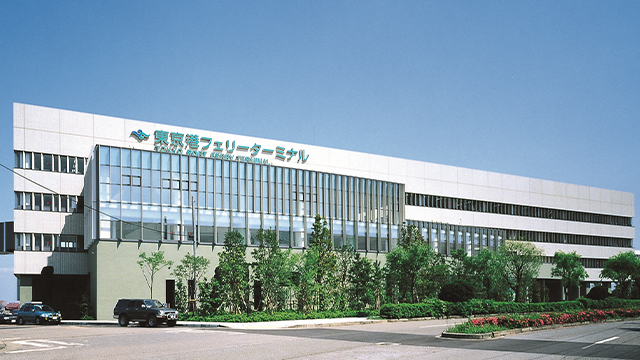
Tokyo Port Ferry Terminal
Tokyo Port Ferry Terminal

The Port of Tokyo Ferry Wharf was developed as a base for car ferry routes that connect the Tokyo metropolitan area with Shikoku, Kyushu, and other areas by sea. Four car ferries operate here on the Shinmoji (via Tokushima) route, transporting food and metal products to the Tokyo metropolitan area, and chemical and machinery products from the Tokyo metropolitan area by sea. It is also used by people that enjoy traveling over the sea by car.
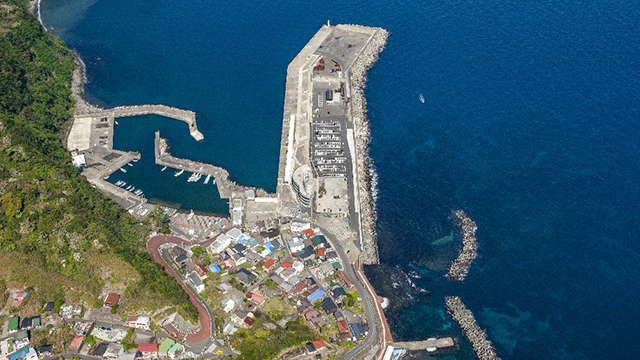
Okada Port Passenger Waiting Place
Okada Port Passenger Waiting Place

Izu Oshima is the largest island in the Izu Archipelago, and is located in the Pacific Ocean 120km from Tokyo. Climbing Mt. Mihara (758m above sea level), popularly known to the islanders as Gojinka-sama (god of fire), offers a spectacular view from near the volcanic crater, which is 300m in diameter and more than 200m deep. The island is also home to hot springs, a town run ranch, a metropolitan park, a local museum, and a volcano museum. Visitors are also welcome to enjoy marine sports, fishing, cycling, and local arts such as camellia dyeing.
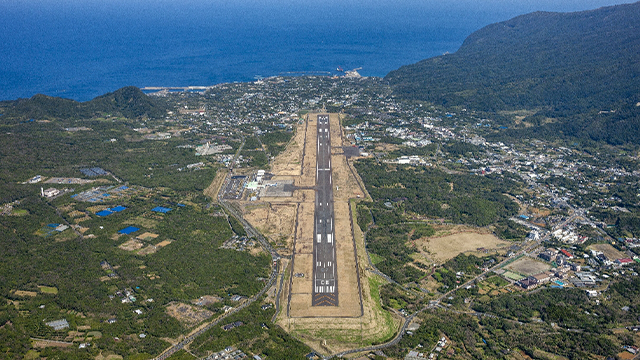
Hachijojima Airport Terminal
Hachijojima Airport Terminal

Hachijojima is a southern Izu Island. It is located 287 kilometers from Tokyo.
It is a natural paradise where various plants thrive year around, and is visited by a wide variety of birds.
It offers a number of ways to enjoy yourself, including hot springs, gourmet food, diving, fishing, trekking, and power spots.
Palm trees line the streets and bright red hibiscus flowers bloom from May to October, enhancing the tropical atmosphere of the island.
On streets

Tourist Information Map and Sign
Tourist Information Map and Sign

The Tokyo Metropolitan Government is promoting to increase of the number of Wi-Fi spots around Tourist Infomation Map and Sign. Look for "TOKYO FREE Wi-Fi" area signs located in town and make your stay in Tokyo more convenient and more comfortable!
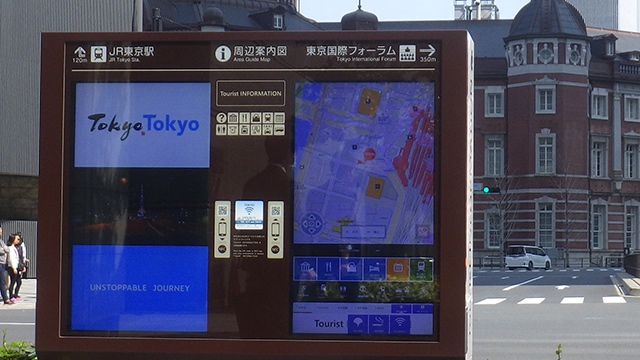
Digital Signage
Digital Signage

The digital signage will provide you useful information that makes your trip enjoyable and easier!
[Features]
〇 Tourist information in multiple languages- You can conveniently search for information in Japanese, English, Chinese and Korean!
〇 Quick Search for travelers- You can quickly get useful information, such as tourist spots around the local area and transit information!
〇 Direct you to your destination-You'll find walking routes as well as recommended barrier-free routes on this signage.
〇 Useful information for travelers- It offers information for case of trouble or emergency during your travel!
〇 The information can also be displayed on your smartphone!
〇 You can connect to "TOKYO FREE Wi-Fi"!
〇 In the event of a disaster- it will provide critical information such as locations of evacuation centers.

Public phone
Public phone

The Tokyo Metropolitan Government is promoting to increase of the number of Wi-Fi spots around Public phone. Look for "TOKYO FREE Wi-Fi" area signs located in town and make your stay in Tokyo more convenient and more comfortable!
Others
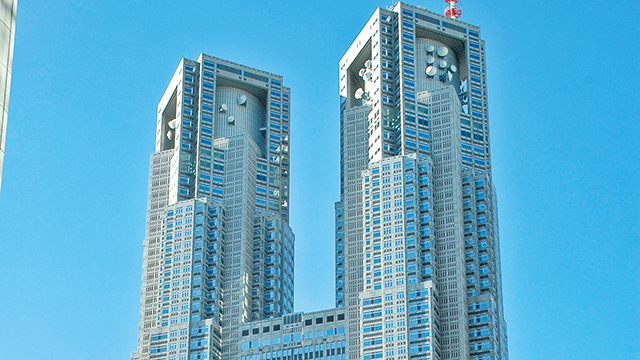
Tokyo Metropolitan Government Offices
Tokyo Metropolitan Government Offices

【TMG No.1 Building】
1F General Information Center, Tokyo Tourist Information Center, Financial institution, Post office
2F Japanese Prefectural Tourism Promotion Corner, Information corner
3F Citizens' Information Room, Citizen suggestions and feedback counter, Traffic accident consultation, Consultation for Foreign Residents, Passageway (Tokyo Metropolitan Assembly Building, TMG No.2 Building)
32F Staff cafeteria, Pharmaceuticals and household goods shop
45F North Observatory and South Observatory
【TMG No.2 Building】
1F Second Government Building Hall, Information corner, Travel consultation office
2F Information corner
4F Staff cafeteria, Pharmaceuticals and household goods shop
【Tokyo Metropolitan Assembly Building】
B1F Tokyo Metropolitan Passport Division(Passport Center)
1F Citizens Hall, Metropolitan government gallery, Assembly building restaurants
2F Main entrance (Reception), Tokyo Metropolitan Assembly PR corner (Tours)
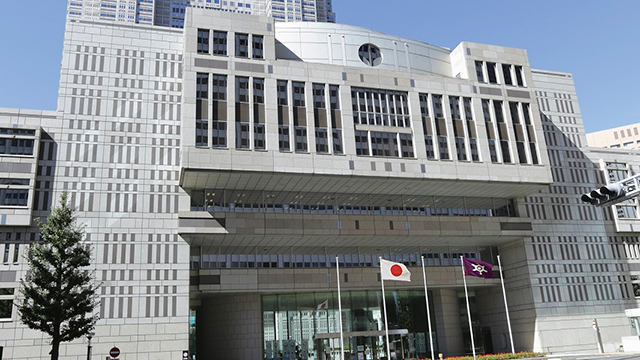
Tokyo Metropolitan Assembly Building
Tokyo Metropolitan Assembly Building

【TMG No.1 Building】
1F General Information Center, Tokyo Tourist Information Center, Financial institution, Post office
2F Japanese Prefectural Tourism Promotion Corner, Information corner
3F Citizens' Information Room, Citizen suggestions and feedback counter, Traffic accident consultation, Consultation for Foreign Residents, Passageway (Tokyo Metropolitan Assembly Building, TMG No.2 Building)
32F Staff cafeteria, Pharmaceuticals and household goods shop
45F North Observatory and South Observatory
【TMG No.2 Building】
1F Second Government Building Hall, Information corner, Travel consultation office
2F Information corner
4F Staff cafeteria, Pharmaceuticals and household goods shop
【Tokyo Metropolitan Assembly Building】
B1F Tokyo Metropolitan Passport Division(Passport Center)
1F Citizens Hall, Metropolitan government gallery, Assembly building restaurants
2F Main entrance (Reception), Tokyo Metropolitan Assembly PR corner (Tours)
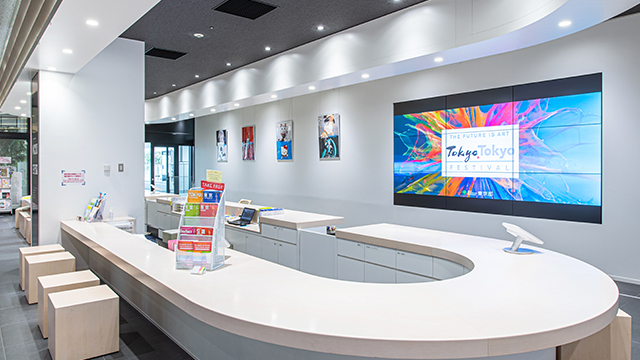
Tokyo Tourist Information Center (Shinjuku Expwy. Bus Terminal)
Tokyo Tourist Information Center (Shinjuku Expwy. Bus Terminal)

Concierges provide both tourist information and materials about Tokyo and various locations throughout Japan in Japanese, English, Chinese and Korean. Tourism image movies of Tokyo are displayed on the large screen behind the concierge counter.
We also offer various services, including travel and ticket booking, currency exchange, baggage delivery and temporary luggage storage.
Tourist Information Centers are also open at the Tokyo Metropolitan Government Building, Keisei Ueno Station and Haneda Airport's International Terminal. Please visit these centers and make your trip enjoyable!
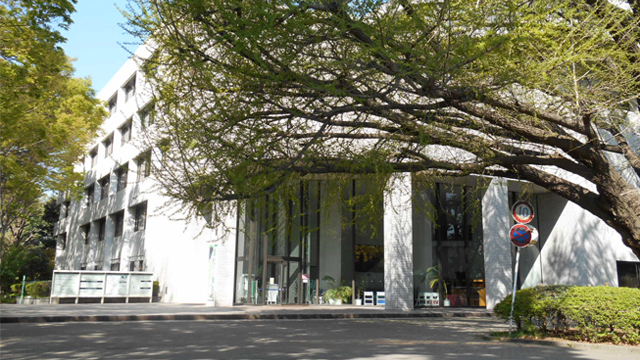
Tokyo Metropolitan Central Library
Tokyo Metropolitan Central Library

Located in verdant Arisugawa-no-miya Memorial Park, the main library complex holds approximately 2 million books, more than any other public library in Japan. From precious ukiyo-e art work of the Edo period to Japanese and foreign books, newspapers, magazines, statistics, and almanacs, Tokyo Metropolitan Central Library contains a wide variety of materials to serve its users' many varied needs.
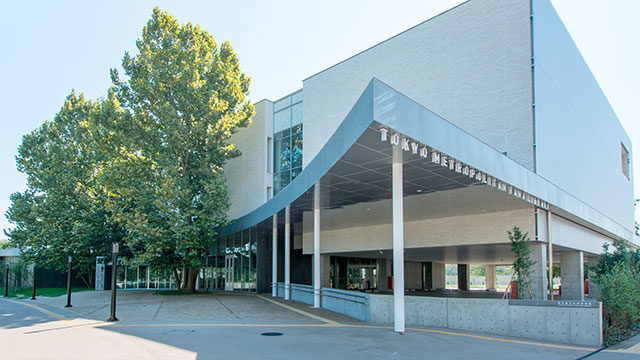
Tokyo Metropolitan Tama Library
Tokyo Metropolitan Tama Library

Tokyo Metropolitan Tama Library is located next to the green and gorgeous Musashikokubunji Park.
Japanese public libraries have introduced the "Tokyo Magazine Bank", the first magazine-centric service of its kind in Japan that contains approximately 17,000 magazines. The library also offers a "Service Providing Materials for Children and Adolescents," which promotes book-reading among Tokyo children with its collection of around 220,000 children's books, research materials on children's reading, and similar items. With these two services as core pillars, the Tokyo Metropolitan Library works to support Tokyo citizens in their research and problem-solving, in addition to providing support services for municipal libraries and schools.
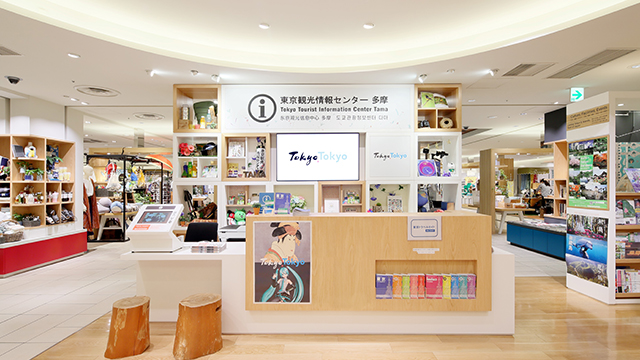
Tokyo Tourist Information Center (Tama)
Tokyo Tourist Information Center (Tama)

Multilingual staff provide sightseeing information primarily about the Tama region in Japanese, English, Chinese, and Korean. Centers also periodically showcase themed displays of special products distinctive to the Tama region and otherwise work to communicate Tama’s beauty.
Tokyo Tourist Information Centers have also been established in the Tokyo Metropolitan Government Building, Keisei Ueno Station, Haneda Airport International Terminal, and the Shinjuku Expressway Bus Terminal. Please visit!
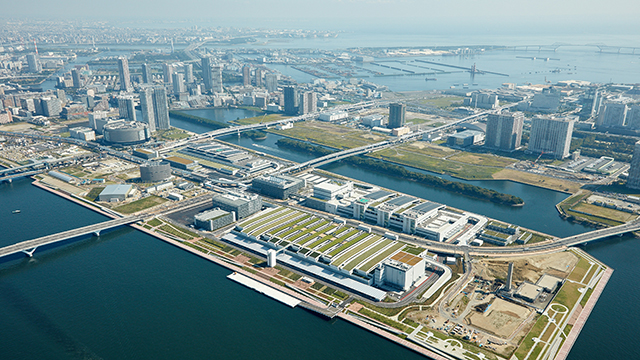
Toyosu Market
Toyosu Market

Toyosu Market is a metropolitan central wholesale market that opened on October 11, 2018 due to the relocation of Tsukiji Market.
In addition to new functions such as ensuring food safety and security, efficient logistics, and environmental measures, it also meets various needs of the production areas, customers and consumers, and aims to be an attractive market that helps to enliven and bring people to the Toyosu area.
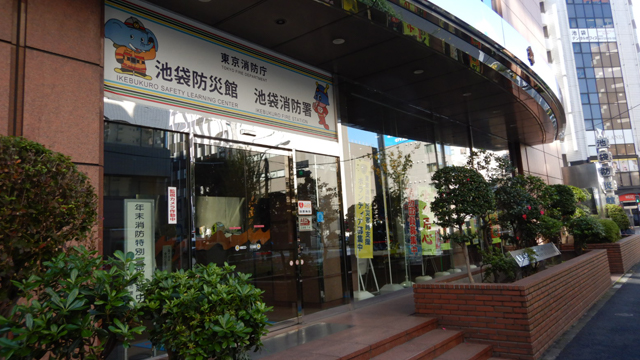
Ikebukuro Life Safety Learning Center
Ikebukuro Life Safety Learning Center

The Ikebukuro Life Safety Learning Center is an interactive learning facility where visitors can have fun while learning experientially about earthquake tremors, how to extinguish fires while they are still small, emergency aid and relief, guidelines for evacuation from fire smoke, and other important facts and techniques pertaining to disaster preparedness. Located a convenient five-minute walk from Ikebukuro Station, the center is used by many for disaster training drills held by neighborhood and town councils, staff training at companies, disaster preparedness education at schools, and other purposes. The center also holds night tours every Friday where visitors can experience earthquakes, fire smoke, and firefighting work in a simulated nighttime fire disaster environment.
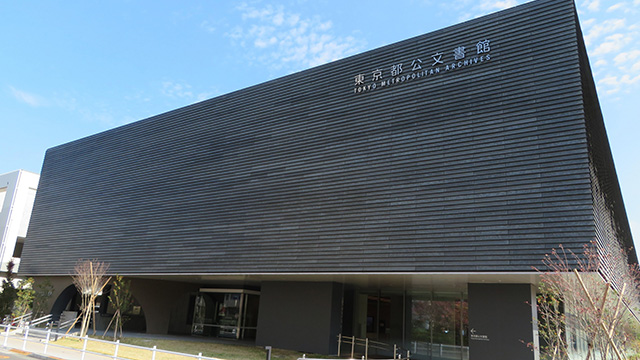
Tokyo Metropolitan Archives
Tokyo Metropolitan Archives

The Tokyo Metropolitan Archives, which opened in its new location in Kokubunji in April 2020, systematically accumulates and stores official documents of the Tokyo Metropolis, aims to enable the efficient use of these documents, and carries out projects to compile the history of the Tokyo Metropolis. Anybody can enter the facility for free without making a reservation.
In addition to the permanent exhibition room that introduces the history of Tokyo from the Edo period to the present, the facility has a temporary exhibition room that holds roughly 2 temporary exhibitions each year. There is also a reading room where it is possible to browse documents and make copies.
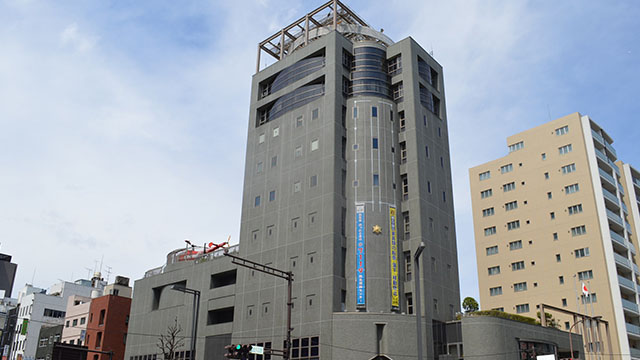
FIRE MUSEUM
FIRE MUSEUM

The museum opened on December 3, 1992 as a public relations and educational facility that provides a comprehensive overview of firefighting, which promotes safety and peace of mind in Tokyo.
The museum has about 8,000 items in its collection, including firefighting-related materials and books. The main exhibits include firefighting-related brocade paintings, tile prints, historical documents, and firefighting tools from the Edo period (1603-1868), as well as actual fire pumps, fireproof clothing, and firefighting equipment and materials from the Meiji period (1868-1912) to the present.
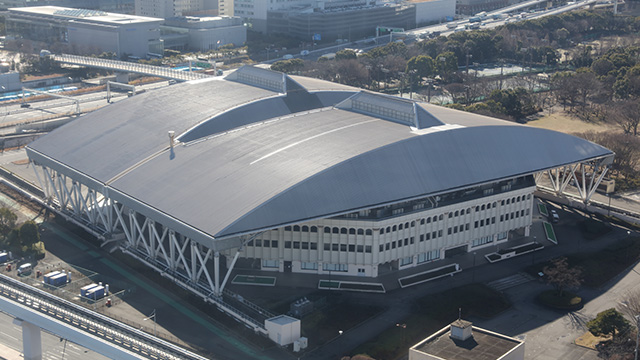
Ariake Tennis Park
Ariake Tennis Park

Since its opening in 1983, Ariake Tennis Park has been popular with many people as a main facility for tennis, from international tournaments to general use. Ariake Tennis Park is one of the main tennis facilities in the country, featuring the Ariake Coliseum centre court and fully equipped with show courts, indoor courts and outdoor courts.
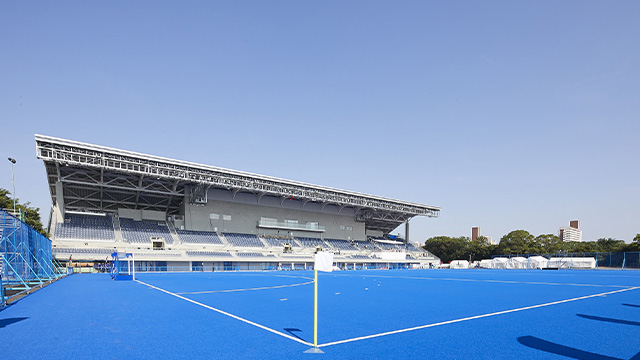
Oi Hockey Stadium
Oi Hockey Stadium

The Oi Hockey Stadium was constructed in the Oi Pier Ocean Park. Plans are underway for the venue to be used for hockey and as a multi-purpose sports facility after the 2020 Games.
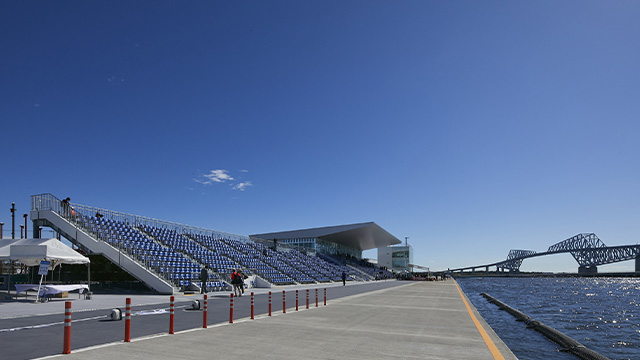
Sea Forest Waterway
Sea Forest Waterway

The rowing and canoe course are on this waterfront site, which is also located close to central Tokyo. Following the 2020 Games, the course will be used for international rowing and canoe competitions, and will become one of the premier locations in Asia for water sports.
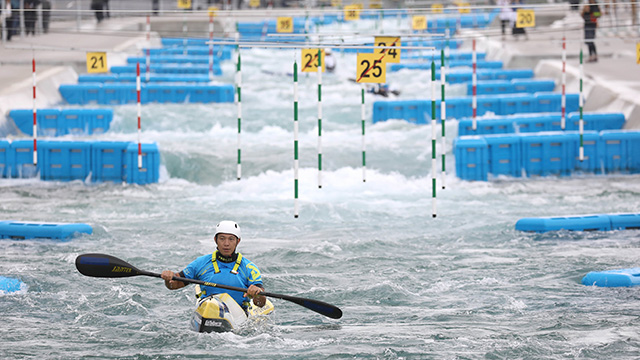
Kasai Canoe Slalom Centre
Kasai Canoe Slalom Centre

The canoe slalom course will be the first man-made course in Japan and will be newly constructed on land adjoining the Kasai Rinkai Park. After the 2020 Games, the facility will be used for a wide range of water sports and leisure activities.
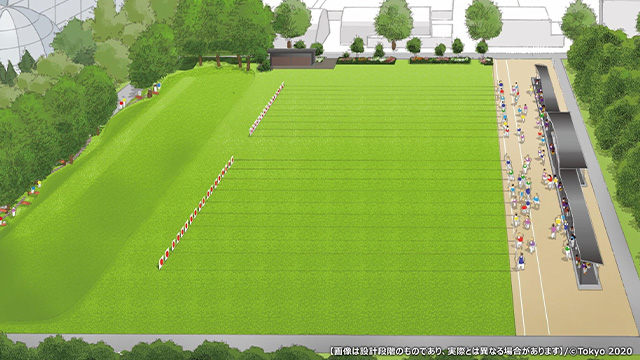
Yumenoshima Park Archery Field
Yumenoshima Park Archery Field

Yumenoshima Park Archery Field has been constructed in the park area of the Dream Island site. Following the 2020 Games, the facility will house archery competitions and be used for a wide range of other activities.
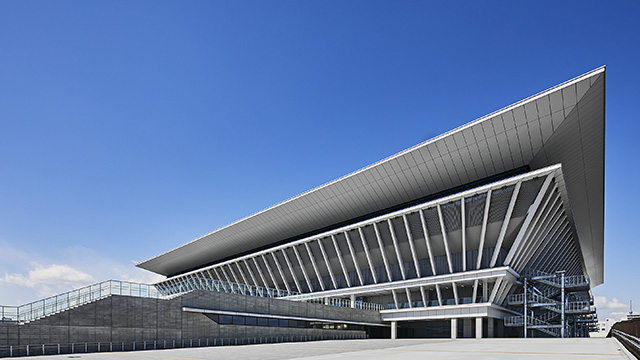
Tokyo Aquatics Centre
Tokyo Aquatics Centre

Tokyo Aquatics Centre has been newly constructed in the Tatsumi-no-Mori Seaside Park. We aim to be a swimming facility where international and domestic swimming competitions can be held, where athletes can strengthen their training, and where sports lovers can engage in sports and improve their health.
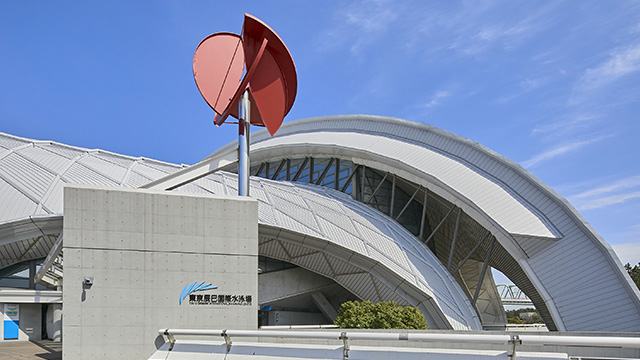
Tatsumi Water Polo Centre
Tatsumi Water Polo Centre

This iconic and spacious venue was designed in 1990 to serve as the main facility for swimming and other water sports in the Tokyo area.
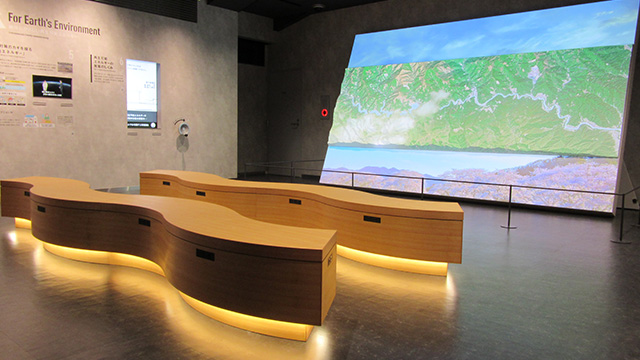
Renewable energy PR facility
Renewable energy PR facility

This facility is located beside the Shiromaru Dam Reservoir and in the middle of the Ohtama Walking Trail, with the scenic Hatonosu Valley hiking trail and Shiromaru fish ladder in the vicinity, attracting many tourists during the holiday season.
Inside, you can experience the spectacular digital diorama depicting the geology of the Okutama mountains using projection mapping, with multiple digital signages that elaborate on the Transportation Bureau's hydroelectric plant and other facilities in Shiromaru. There is also a booth that provides tourist information.
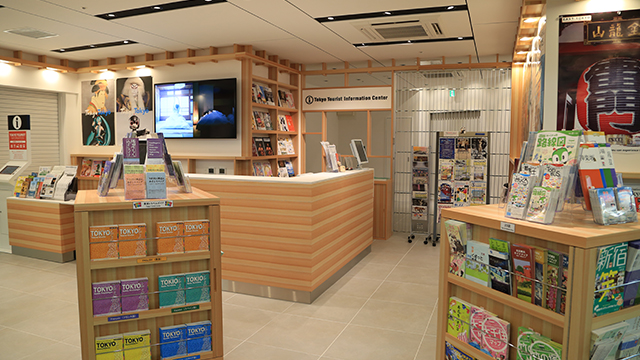
Tokyo Tourist Information Center (Keisei Ueno)
Tokyo Tourist Information Center (Keisei Ueno)

Concierges provide information on sightseeing in Tokyo and throughout Japan in Japanese, English, Chinese, and Korean. Tokyo Tourist Information Centers can be found at five locations: Tokyo Metropolitan Government Building, Shinjuku Bus Terminals, Keisei Ueno, Haneda Airport, and Tama. Make sure to stop by!
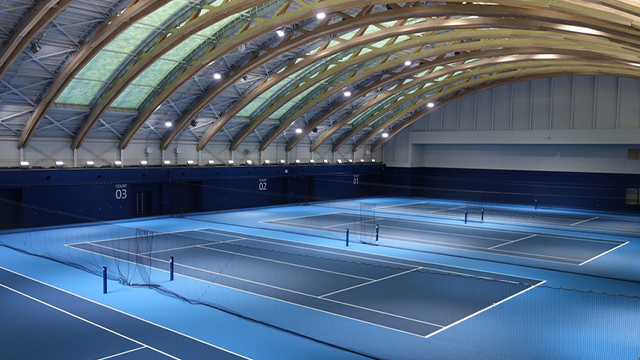
Ariake Tennis Park (Indoor Court)
Ariake Tennis Park (Indoor Court)

This indoor tennis court has eight semi hard courts. It is attached to a clubhouse. It is air conditioned, allowing players to play regardless of the season or weather.




